Smart House System Technology Explained
Introduction, energy management, security system, lighting system, smart appliances, entertainment, emergency management.
Smart House is a term used to describe a house that has Computer Controlled Automation System that controls various functions in a house such as appliances and lighting. This system employs smart technology allowing for networking of appliances hence enabling access and operation of the appliances from any part of the network. The system can be used in monitoring, warning and carrying out various functions according to selected criteria. The smart technology enables automatic communication via the mobiles phones, the internet and the fixed telephones.
Smart technology makes use of different electronics components, performing different functions. These components are divided into the following general groups:
- Sensors: for monitoring and submitting any changes, examples are humidity sensor, smoke detectors, movement and heat sensors, thermometers etc.
- Actuators: These components perform physical actions; examples are automatic light switches, relays and door and window openers.
- Controllers: these components make choice based on occurrences and programmed rules.
- Central units: Used in programming and making changes to a system, a good example is a computer.
- Interface: These are components which help user to communicate with the system.
The most important aspects to be taken care of for a house to be considered smart are:
- Energy management
- Emergency management
- Smart appliances.
Smart houses are considered very efficient in energy management.Electronics devices are installed in the house to monitor the usage of the energy and the number of people in the house at a particular time for energy regulation. When there is no one in the house, the temperatures settings are lowered automatically and all the appliances and lights that are not in use are turned off. The energy management system also controls heating system, fans and air conditioners in a way that will save energy. The smart house energy system also automatically turns off energy from an outlet that is not being used.
Smart house energy management system helps in saving energy cost by up to 65% compared to a house where energy usage is controlled manually.
A smart house is far much secure as it is easy to protect making it hard to break in than the current house. Alarm systems, similar in application to car alarm are installed in a smart house. The security system put the house in security mode, automatically shutting all windows and doors.
The smart house security system is programmed for a single day use or for a long time when the owner of the house is in a long trip or vacation. In this case, the security system is set to open the curtains and turn on and off the lights, making it look like there is a person in the house.
As part of the security system, surveillance cameras are installed and hidden around the house. These camera are monitored over the internet and the house owner can check at all aspects of the house include burglars and other unusual happening around and inside the house.
Smart house employs lighting system that makes the house safe and easier to live in by use of programmable lights or remotely accessed lighting system. With programmable lighting system, the house owner programs the lights to come on of off at a specific time and even dim depending with the mood. A central computer is used to turn specific lights at a specific time during the night. This helps in deterring criminals, hence improving security. With remote access, lights can be controlled remotely from any where inside or outside the house using mobile phones or PDAs.
For a house to be considered smart, smart appliances are installed to make use of the smart technology. The appliances are networked in the system to perform specific task at a given time.
Examples of smart appliances include remote controlled coffee maker which brews coffee just before the house owner wakes up. The coffee maker is linked to an alarm to wake up the house owner when the coffee is ready. A smart refrigerator automatically adjusts the temperatures inside based on the temperature of food inside. These smart appliances are connected to a computer which automatically turns the appliances on and off.
Smart appliances make the life of people calmer and better structured as the technology make planning of the day easier. This tranquility help people to concentrate on a specific task as other tasks are being carried on without a lot of monitoring and intervention.
Smart entertainment systems are designed to controls the way home entertainment system including the TV and Home theatre system functions. Smart TV user have the ability to change channels by either speaking or accessing the TV via the internet, instructing it on what to record and at what time. Ultra Thin rear projections TVs have been developed using Digital Light Technology (DLP), they have massive screen sizes, and they are slim and light enough to hang on the wall.
Smart internet enabled home theatres system stream music from multiple computers on the internet and store in an internal hard drives. This home theatre can be accessed remotely over the internet to control almost all aspects of the system.
A smart house emergency system is designed in a way that it will inform house occupant where there is an emergency and at the same time contact the relevant authority on the emergency for a quick response. If there is fire for example, the fire detector sends a signal to the central computer which triggers the alarm and at the same time make a call to the fire department.
Another example is when there is a gas leakage in the house; the emergency control system will shut down the main gas supply and turn off all electrical appliances to prevent any fire out break. The system will then turn on the alarm and send a signal to the house owner informing them on the gas leak though the mobile phone or through the internet to a personal computer.
Smart houses are the choice for most people as they improve the lives of people in a great way making it easier to live because of the convenience and safety they offer. With automatic smart appliances, people are able to plan their time and concentrate on important tasks in their lives.
Chris D. Nugent (2006) Smart Home and Beyond, IOS Publishers, United States.
David Heckman (2008) A Small World: Smart Houses and the Dream of the Perfect Day, Duke University Press, United Kingdom.
Richard Harper (2003) Inside the Smart Home, Springer Publishers, New York.
Smart House: Your wish is Their command, Web.
Smart House: The so called Sci-Fi Life, Web.
Smart House Designs, Web.
Cite this paper
- Chicago (N-B)
- Chicago (A-D)
StudyCorgi. (2021, October 21). Smart House System Technology Explained. https://studycorgi.com/smart-house-system-technology-explained/
"Smart House System Technology Explained." StudyCorgi , 21 Oct. 2021, studycorgi.com/smart-house-system-technology-explained/.
StudyCorgi . (2021) 'Smart House System Technology Explained'. 21 October.
1. StudyCorgi . "Smart House System Technology Explained." October 21, 2021. https://studycorgi.com/smart-house-system-technology-explained/.
Bibliography
StudyCorgi . "Smart House System Technology Explained." October 21, 2021. https://studycorgi.com/smart-house-system-technology-explained/.
StudyCorgi . 2021. "Smart House System Technology Explained." October 21, 2021. https://studycorgi.com/smart-house-system-technology-explained/.
This paper, “Smart House System Technology Explained”, was written and voluntary submitted to our free essay database by a straight-A student. Please ensure you properly reference the paper if you're using it to write your assignment.
Before publication, the StudyCorgi editorial team proofread and checked the paper to make sure it meets the highest standards in terms of grammar, punctuation, style, fact accuracy, copyright issues, and inclusive language. Last updated: November 10, 2023 .
If you are the author of this paper and no longer wish to have it published on StudyCorgi, request the removal . Please use the “ Donate your paper ” form to submit an essay.
- Search Menu
- Advanced Articles
- Editor's Choice
- Author Guidelines
- Publish with us
- Submission Site
- Open Access
- Self-Archiving Policy
- About Clean Energy
- About the National Institute of Clean and Low-Carbon Energy
- Editorial Board
- Instructions for Reviewers
- Advertising & Corporate Services
- Journals Career Network
- Journals on Oxford Academic
- Books on Oxford Academic
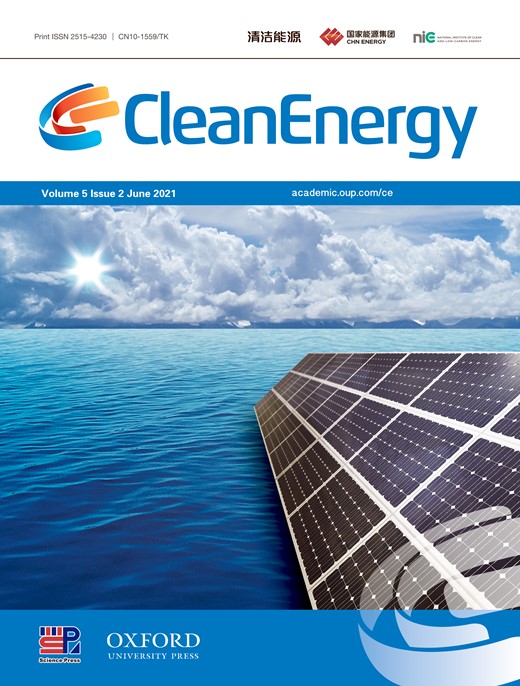

Article Contents
Introduction, 1 smart-home definition, 2 smart-home infrastructures, 3 smart-home energy-management scheme, 4 technical challenges of smart homes, 5 conclusion, conflict of interest.
- < Previous
Smart homes: potentials and challenges
- Article contents
- Figures & tables
- Supplementary Data
Rasha El-Azab, Smart homes: potentials and challenges, Clean Energy , Volume 5, Issue 2, June 2021, Pages 302–315, https://doi.org/10.1093/ce/zkab010
- Permissions Icon Permissions
Decentralized distributed clean-energy sources have become an essential need for smart grids to reduce the harmful effects of conventional power plants. Smart homes with a suitable sizing process and proper energy-management schemes can share in reducing the whole grid demand and even sell clean energy to the utility. Smart homes have been introduced recently as an alternative solution to classical power-system problems, such as the emissions of thermal plants and blackout hazards due to bulk plants/transmission outages. The appliances, sources and energy storage of smart homes should be coordinated with the requirements of homeowners via a suitable energy-management scheme. Energy-management systems are the main key to optimizing both home sources and the operation of loads to maximize home-economic benefits while keeping a comfortable lifestyle. The intermittent uncertain nature of smart homes may badly affect the whole grid performance. The prospective high penetration of smart homes on a smart power grid will introduce new, unusual scenarios in both generation and loading. In this paper, the main features and requirements of smart homes are defined. This review aims also to address recent proposed smart-home energy-management schemes. Moreover, smart-grid challenges with a high penetration of smart-home power are discussed.

Smart homes provide comfortable, fully controlled and secure lifestyles to their occupants. Moreover, smart homes can save energy and money with the possibility of profiting from selling clean renewable energy to the grid. On the other hand, the probable decrease in total domestic-energy loads encourages many governments to support promising smart-home technologies. Some countries have already put out many rules, laws and subsidy programmes to encourage the integration of smart homes, such as encouraging the optimization of the heating system, supporting building energy storage and/or deploying smart meters. For instance, the European Standard EN 15232 [ 1 ] and the Energy Performance of Building Directive 2010/31/EU [ 2 ], which is in line with Directive 2009/72/EC as well as the Energy Road Map 2050 [ 3 ], encourage the integration of smart-home technologies to decrease power demand in residential areas.
To control the environment, a smart home is automated by controlling some appliances, such as those used for lighting and heating, based on different climatic conditions. Now, recent control schemes adapt many functions besides classical switching ones. They can monitor the internal environment and the activities of the home occupants. They also can independently take pre-programmed actions and operate devices in set predefined patterns, independently or according to the user’s requirements. Besides the ease of life, smart homes confirm efficient usage of electricity, lowering peak load, reducing energy bills and minimizing greenhouse-gas emissions [ 4 , 5 ].
Smart homes can be studied from many points of view. The communication systems [ 6 ], social impacts [ 7 ], thermal characteristics [ 8 ], technologies and trends of smart homes [ 9 ] are reviewed individually. Moreover, the monitoring and modelling of smart-home appliances via smart meters are reviewed for accurate load forecasting, as in [ 10 , 11 ]. Recently, power-grid authorities have modified residential electrical tariffs to encourage proper demand-side management by homeowners. Different from previous reviews, this paper introduces smart homes from the electrical/economic point of view. It also discusses smart-home energy-management systems (SHEMS) in two different modes, offline load scheduling and real-time management. The prospective impacts of unusual smart-home power profiles on future smart grids are also summarized.
After this introductory section, Section 1 describes the different definitions of smart homes within the last two decades. Smart-home communication schemes and other infrastructures of smart homes are discussed in Section 2. Section 3 discusses in more detail the existing functions of SHEMS, their pre-proposed optimization techniques and related technical/economical objective functions. The impacts of smart homes on modern grids are also discussed in Section 4. Finally, in Section 5, the main conclusions and contributions of the paper are highlighted.
The term ‘smart home’ has been commonly used for about two decades to describe houses with controlled energy schemes. This automation scheme confirms easier lifestyles for homeowners than normal un-automated homes, especially for elderly or disabled persons. Recently, the concept of ‘smart home’ has a wider description to include many applications of technologies in one place.
Sowah et al. [ 12 ] define smart homes as: ‘Houses that provide their occupants a comfortable, secure, and energy efficient environment with minimum possible costs regardless their occupants.’ The Smart Homes Association defines a smart home as: ‘The integration of technology and services through home networking for a better quality of living’ [ 13 ].
Makhadmeh et al. define them as: ‘Incorporated residential houses with smart technology to improve the comfort level of users (residents) by enhancing safety and healthcare and optimizing power consumption. Users can control and monitor smart-home appliances remotely through the home energy-management system (HEMS), which provides a remote monitoring system that uses telecommunication technology’ [ 14 ].
Smart homes can be defined as: any residential buildings using different communication schemes and optimization algorithms to predict, analyse, optimize and control its energy-consumption patterns according to preset users’ preferences to maximize home-economic benefits while preserving predefined conditions of a comfortable lifestyle.
Distributed clean energy generated by smart homes provides many benefits for prospective smart grids. Consequently, the effects of smart homes on future power grids should be extensively studied. In the near future, smart homes will play a major role as a power supplier in modern grids, not only as a power consumer.
The general infrastructure of smart homes consists of control centres, resources of electricity, smart meters and communication tools, as shown in Fig. 1 . Each component of the smart-home model will be discussed in the following subsections.

Infrastructure of SHEMS source
2.1 The control centre
The control centre provides home users with proper units to monitor and control different home appliances [ 15 ]. All real-time data are collected by SHEMS to optimize the demand/generation coordination and verify the predefined objectives. The main functions of the control centre can be summarized as follows [ 15 ]:
(i) collecting data from different meters, homeowners’ commands and grid utility via a proper communication system;
(ii) providing proper monitoring and analysing of home-energy consumption for homeowners;
(iii) coordinating between different appliances and resources to satisfy the optimal solution for predefined objectives.
2.2 Smart meter
The smart meter receives a demand-response signal from power utilities as an input to the SHEMS system [ 16 , 17 ]. Recently, advanced smart-metering infrastructures can monitor many home features such as electrical consumption, gas, water and heating [ 18 ].
2.3 Appliances
Smart-home loads can be divided according to their operating nature into two categories: schedulable and non-schedulable loads. Non-schedulable loads are operated occasionally according to the homeowner’s desires without any predictable operating patterns, such as printers, televisions and hairdryers, whereas schedulable loads have a predictable operating pattern that can be shifted or controlled via SHEMS, such as washing machines and air conditioners [ 19 ].
According to [ 19 ], controllable devices are also classified into interruptible and non-interruptible load according to the effect of supply interruption on their tasks. Electric vehicles (EVs) can be considered as an exceptional load [ 20 , 21 ]. EVs have two operating modes: charging and discharging. Therefore, EVs are interruptible schedulable loads during the charging mode. Moreover, EV battery energy can also be discharged to supply power to the grid during critical events, which is known as vehicle-to-grid [ 22 ]. By SHEMS, EVs can participate in supplying loads during high-priced power periods. In low-priced power periods, EVs restore their energy from the grid [ 23 , 24 ].
2.4 Resources of electricity
Solar and wind plants are the most mature renewable-energy sources in modern grids. Nowadays, many buildings have installed photovoltaic (PV) modules, thermal solar heaters or micro wind turbines. For smart homes, various functions can be supplied by solar energy besides generating electricity, such as a solar water heater (SWH), solar dryer and solar cooler [ 25 ]. Moreover, PV plants are cheap with low requirements of maintenance [ 26 ], whereas hot water produced by SWHs can be used in many home functions, such as washing and cooking, which increases the home-energy efficiency [ 27 ].
Energy storage may be considered as the cornerstone for any SHEMS. SHEMS are usually installed with energy-storage systems (ESSs) to manage their stored energy according to predefined objectives. Many energy-storage technologies are available in the power markets. Batteries and fuel cells are the most compatible energy-storage types of smart-home applications [ 28 ]. A fuel-cell structure is very similar to a battery. During the charging process, hydrogen fuel cells use electricity to produce hydrogen. Hydrogen feeds the fuel cell to create electricity during the discharging process. Fuel cells have relatively low efficiency compared to batteries. Fuel cells provide extra clean storage environments with the capability of storing extra hydrogen tanks. That perfectly matches isolated homes in remote areas [ 29 ].
Although wind energy is more economical for large-scale plants, it has a very limited market for micro wind turbines in homes. Typically, micro wind turbines require at least a wind speed of 2.7 m/s to generate minimum power, 25 m/s for rated power and 40 m/s for continuous generated power [ 30 ]. A micro wind turbine is relatively expensive, intermittent and needs special maintenance requirements and constraints compared to a solar plant [ 31 ].
Recently, biomass energy has been a promising renewable resource alternative for smart homes. Many pieces of research have recommended biomass energy for different types of buildings [ 32 ]. Heating is the main function of biomass in smart homes, as discussed in [ 33 , 34 ]. In addition, a biomass-fuelled generation system is examined for many buildings [ 35 , 36 ].
2.5 Communication schemes
Recently, communication systems are installed as built-in modules in smart homes. Both home users and grid operators will be able to monitor and control several home appliances in the near future to satisfy the optimum home-energy profile while preserving a comfortable lifestyle. Therefore, both wired and wireless communication schemes are utilized, which is known as a home area network (HAN), to cover remote-control signals as home occupants’ ones. Fig. 1 shows an example of a HAN that consists of Wi-Fi and cloud computing networks for both indoor and outdoor data exchange, respectively [ 37 , 38 ].
Energy-management systems for homes require three main components: the computational embedded controllers, the local-area network communication middleware and the transmission control protocol/internet protocol (TCP/IP) communication for wide-area integration with the utility company using wide-area network communication [ 37 ].
According to home characteristics, many wired communication schemes can be selected, such as power-line communication (PLC), inter-integrated circuit (I2C) and serial peripheral interface or wireless technologies such as Zigbee, Wi-Fi, radio-frequency identification (RFID) and the Internet of Things (IoT) to develop HANs. A few of the most common techniques will be discussed briefly in the following subsections [ 38 ].
PLC is a technique that uses power lines to transmit both power and data via the same cable to customers simultaneously. Such wired schemes provide fast communication with low interference of data. Moreover, PLC provides many communication terminals, as all power plugs can be used for data transferring. As all electrical home devices are connected by power cables, PLC can communicate with all these devices via the same cable.
PLC set-up has a low cost, as it uses pre-installed power cables with minimum hardware requirements. With a PLC communication scheme, home controllers can also be integrated easily with a high speed of data transfer. On the other hand, PLC has a high probability of data-signal attenuation. Furthermore, data signals suffer from electromagnetic interference of transmitted power signals.
2.5.2 Zigbee
Zigbee is a wireless communication technique [ 37–46 ]. Zigbee follows the IEEE 802.15.4 standard as a radio-frequency wireless communication scheme. It does not require any licenses for limited zones such as homes [ 37 ]. Also, Zigbee is a low-power-consuming technique. Therefore, it is suitable for basic home appliances, such as lighting, alarm systems and air conditioners [ 39 , 40 ]. Zigbee usually considers all home devices as slaves with a master coordinator/controller, which is known as a master–slave architecture.
Zigbee provides highly secured transferred data [ 38 , 41 ] with high reliability and capacity [ 42 ]. It also has self-organizing capabilities [ 42 ]. Conversely, Zigbee is relatively expensive due to special hardware requirements with low data-transfer rates. Moreover, Zigbee is not compatible with many other protocols, such as internet-supported protocols and Wi-Fi.
2.5.3 Wi-Fi technology
Wi-Fi is a wireless communication technique that follows the IEEE 802.11 standard. Wi-Fi provides high-rate data transfer that is compatible with many information-based devices such as computers, laptops, etc. [ 43 , 44 ].
Wi-Fi is a highly secured scheme with many of the familiar internet capabilities and low data-transfer delays (<3 ms) [ 45 ]. On the contrary, it is a relatively high-power-consuming scheme compared to Zigbee schemes [ 45 ]. Also, home devices can affect transmitted data signals by their emitted electromagnetic fields [ 46 ]. Wi-Fi can also suffer from interference from other communication protocols such as Zigbee and Bluetooth [ 43 ].
RFID is a wireless communication technique that conforms to the electronic product code protocol [ 47–52 ]. It can coincide with other communication schemes such as Wi-Fi and Zigbee. It can be utilized for a relatively widespread range of frequencies, from 120 kHz to 10 GHz. It also covers a wide range of distances, from 10 cm to 200 m [ 48 ]. Many researchers are investigating RFID home applications, such as energy-management systems [ 49 ], door locks [ 50 ] and lighting controls [ 51 ].
RFID operates on tags and reader-identification systems with a high data-transfer rate. Nevertheless, RFID has expensive chips with low bandwidth. The possibility of tag collision within the same zone decreases the accuracy of the RFID scheme.
This scheme connects home devices, users and grid operators via the internet to monitor and manage smart homes [ 6 , 38 , 53–65 ]. Consequently, the IoT and cloud computing have proven to be cheap, popular and easy services for smart homes. Moreover, IoT schemes are compatible with many other communication protocols, such as Zigbee, Bluetooth, etc., as listed in Table 1 . Internet hacking is the main problem with IoT schemes. System security and privacy are critical challenges for such internet-based schemes.
IoT protocols features
Today, building energy-management systems (BEMS) are utilized within residential, commercial, administration and industrial buildings. Moreover, the integration of variable renewable-energy sources with proper ESSs deployed in buildings represents an essential need for reliable, efficient BEMS.
For small-scale residential buildings or ‘homes’, BEMS should deal with variable uncertain load behaviours according to the home occupants’ desires and requirements, which is known as SHEMS. Throughout recent decades, many SHEMS have been presented and defined in many research studies.
In [ 66 ], SHEMS are defined as services that efficiently monitor and manage electricity generation, storage and consumption in smart houses. Nazabal et al. [ 67 ] include a collaborative exchange between smart homes and the utility as a main function of SHEMS. In [ 68 ], SHEMS are defined from the electrical-grid point of view as important tools that provide several benefits such as flattening the load curve, a reduction in peak demand and meeting the demand-side requirements.
3.1 Functions of SHEMS
Adaptive SHEMS are required to conserve power, especially with the increasing evolution in home loads. SHEMS should control both home appliances and available energy resources according to the real-time tariff and home user’s requirements [ 4 ]. Home-management schemes should provide an interface platform between home occupants and the home controller to readjust occasionally the load priority [ 5 ].
As shown in Fig. 2 , the majority of smart-home centres can be summarized as having five main functions [ 5 ], as follows:

Functions of SHEMS
(i) Monitoring: provides home residents with visual instantaneous information about the consumed power of different appliances and the status of several home parameters such as temperature, lights, etc. Furthermore, it can guide users to available alternatives for saving energy according to the existing operating modes of different home appliances.
(ii) Logging: collects and saves data pertaining to the amount of electricity consumed by each appliance, generated out of energy-conservation states. This functionality includes analysing the demand response for real-time prices.
(iii) Control: both direct and remote-control schemes can be implemented in smart homes. Different home appliances are controlled directly by SHEMS to match the home users’ desires, whereas other management functions are controlled remotely via cell phones or laptops, such as logging and controlling the power consumption of interruptible devices.
(iv) Management: the main function of SHEMS. It concerns the coordination between installed energy sources such as PV modules, micro wind turbines, energy storage and home appliances to optimize the total system efficiency and/or increase economic benefits.
(v) Alarms: SHEMS should respond to specific threats or faults by generating proper alarms according to fault locations, types, etc.
3.2 Economic analysis
Economic factors affecting home-management systems are classified into two classes. First, sizing costs include expanses of smart-home planning. Second, operating costs consist of bills of consumed energy. These costs depend mainly on the electrical tariff.
3.2.1 Sizing costs
These include capital, maintenance and replacement costs of smart-home infrastructures, such as PV systems, wind turbines, batteries/fuel cells and communication systems. In most previous SHEMS, such planning costs usually are not taken into consideration, as management schemes usually concern the daily operating costs only [ 69 ].
3.2.2 Operating costs
The electricity tariff is the main factor that gives an indication of the value of saving energy, according to the governmental authority; there are many types of tariffs, as follows [ 70–74 ]:
(i) Flat tariffs: the cost of consumed energy is constant regardless of the continuous change in the load. Load-rescheduling schemes do not affect the electricity bills in this scheme. Therefore, homeowners are not encouraged to rearrange their consumed energy, as they have no any economic benefits from managing the consumption of their appliances.
(ii) Block-rate tariffs: in this scheme, the monthly consumed energy price is classified into different categories. Each category has its own flat-rate price. Therefore, the main target of SHEMS is minimizing the total monthly consumed energy to avoid the risk of high-priced categories.
(iii) Seasonal tariffs: in this scheme, the total grid-demand load is changed significantly from one season to another. Therefore, the utility grid applies a high flat-rate tariff in high-demand seasons and vice versa. SHEMS should minimize the total consumption in such high-priced seasons and get the benefit of consumption in low-priced seasons.
(iv) Time-of-use (TOU) tariff: there are two or three predefined categories of tariffs daily in this scheme. First, a high-priced-hours tariff is applied during high-demand hours, which is known as a peak-hours tariff. Second, an off-peak-hours tariff is applied during low-demand hours with low prices for energy consumption. Sometimes, three levels of pricing are defined by the utility grid during the day, i.e. off-, middle- and high-peak costs, as discussed in [ 75 ]. SHEMS shift interruptible loads with low priority to off-peak hours to minimize the bill.
(v) Super peak TOU: this can be considered as a special case of the previously described TOU tariff but with a short peak-hours period of ~4 hours daily.
(vi) Critical peak pricing (CPP): the utility grid uses this tariff scheme during expected critical events of increasing the gap between generation and power demand. The price is increased exceptionally during these critical events by a constant predefined rate.
(vii) Variable peak pricing: this is a subcategory of the CPP tariff in which the exceptional increase in the tariff is variable. The utility grid informs consumers of the exceptional dynamic price increase according to its initial expectations.
(viii) Real-time pricing (RTP): the price is changing continuously during pre-identified intervals that range from several minutes to an hour. This tariff is the riskiest pricing scheme for homeowners. The electricity bill can increase significantly without a proper management system. SHEMS should communicate with grid utility and reschedule both home appliances, sources and energy storage continuously to minimize the total bill.
(viii) Peak-time rebates (PTRs): a proper price discount is considered for low-consumption loads during peak hours, which can be refunded later by the grid.
Depending on the electricity tariff, SHEMS complexity varies dramatically. In the case of using a flat-rate tariff, the algorithm becomes simpler, as one value is recorded for selling or buying the electricity. Tariffs may be published from the proper authority or predicted according to historical data. Prediction of the dynamic tariff is a main step in any SHEMS. Many time frames of tariff prediction are proposed that vary from hourly, daily or even a yearly prediction. Many optimization techniques with various objective functions are proposed to handle different features of both smart-home infrastructures and electricity tariffs, as will be discussed in the following section.
3.3 Pre-proposed SHEMS
Different SHEMS may be classified according to four features: operational planning of load-scheduling techniques, system objective functions, optimization techniques and smart-home model characteristics, as will be discussed in the following subsections.
3.3.1 Load-scheduling techniques
SHEMS concern the generation/load power balance to provide a comfortable lifestyle with the minimum possible costs. Scheduling loads according to their priority and the periods of renewable energy (solar, wind and EV state) can help in reducing the overall energy consumption daily. According to data collected by the management system, an initial load schedule is suggested daily to minimize the daily cost of consumed energy [ 76 ].
By using a proper optimal scheduling algorithm, electricity bills can be reduced by shifting loads from high-priced to low-priced intervals [ 77 , 78 ]. Many techniques have been proposed for home load scheduling, as will be discussed in the following subsections:
(i) Rule-based scheduling: in this algorithm, all home appliances and resources are connected to smart data-collector taps. By processing the collected data, different appliances are scheduled according to their priorities and based on the if/then rule. Also, some high-priority loads are supplied by home renewable sources/storage to maintain their function during predicted peak hours [ 79 , 80 ].
(ii) Artificial intelligence (AI): many AI controllers have been proposed for home load scheduling, such as artificial neural networks (ANNs), fuzzy logic (FL) and adaptive neural fuzzy inference systems (ANFISs). Table 2 compares between the three types of scheduling scheme based on AI.
Optimization techniques for load scheduling
3.3.2 Objective functions
(i) Single-objective techniques: in these schemes, only one criterion is minimized or maximized according to the home-user requirements. Several minimization objective functions were proposed, as follows:
lifetime degradation [ 47–49 ];
life-cycle costs [ 93 ];
gas emissions [ 94–96 ];
both active and reactive losses [ 97 , 98 ].
On the other hand, some research defined other single maximizing objective functions, such as:
net present value [ 96 ].
economic profits [ 97 , 98 ].
increased system reliability: according to many well-known reliability indices, such as loss of power supply probability, loss of load probability and others [ 99 , 100 ].
generated power [ 101 , 102 ].
loadability [ 103 ];
Multi-objective techniques: homeowners may have several criteria to be optimized together. Multi-objective optimization (MOO) problems consider many functions simultaneously. MOO finds a proper coordination that moderately satisfies the considered objectives. In [ 102 ], SHEMS with MOO techniques are summarized. Table 3 lists some examples of such multi-objective functions.
Multi-objective functions of SHEMS
3.3.3 Optimization techniques
Optimization techniques aim usually to identify the best coordination taking into consideration predefined constraints. Many approaches are available for addressing optimization problems. These approaches can be classified into two categories: classical and AI-based techniques. Table 4 lists various SHEMS optimization techniques and their main features.
Optimization techniques in SHEMS
Classical methods, especially linear programming types, have been usually applied in the last decade for smart homes with limited objective functions and simple model characteristics of tariff and home appliances. Recently, AI-based techniques have been proposed to cover more complicated models of smart homes with multi-objective functions with high levels of comfortable lifestyles.
3.3.4 Home-model characteristics
The smart-home model differs significantly according to three factors: installed variable energy sources, applied tariff and EV deployment. PV systems have been applied for nearly all studied smart homes due to their low price, simplicity of installation, low maintenance requirements and easily predicted daily power profile. On the other hand, a few pieces of research have considered micro wind turbines in their home models, such as [ 120 ]. Wind turbines are limited by high-wind-speed zones that are usually located in rural areas. In addition, homeowners usually do not prefer wind turbines due to their high prices, mechanical maintenance requirements and the unpredictable variation in wind power.
Dynamic tariffs are applied in most smart-home research. Specifically, the TOU tariff is analysed in a lot of studies, such as [ 121 , 122 ], whereas little research uses RTP, such as [ 123 , 124 ]. EV is studied as an energy source in the parking period or vehicle-to-grid (V2G) mode. In [ 75 , 125 ], EV in V2G mode reduces the electricity bill in peak hours, whereas, in [ 126–130 ], ESSs are managed only to reduce the electricity usage from the grid.
Many technical challenges arise for modern grids due to the increasing mutual exchange between smart homes and utility grids, especially power-quality control. Electric-power-quality studies usually confirm the acceptable behaviour of electrical sources such as voltage limits and harmonics analysis. Recently, smart power grids have diverse generation sources from different technologies that depend mainly on power electronics devices that increase the difficulty in power-quality control. Power-quality constraints should be taken into consideration for any energy-management systems to provide harmony between modern sources and loads.
On the other hand, power-quality issues should not form an additional obstacle against the integration of new technologies in modern grids. Therefore, both advanced communication schemes and AI-based techniques make modern grids ‘smart’ enough to cope with selective power-quality management. Smart homes exchange power with utility grids. With the prospective increase in such smart homes, the effect of their behaviour should be studied and controlled. Smart homes affect the grid-power quality in three different areas, as will be discussed in the following paragraphs [ 154–156 ].
4.1 Generating equipment
Integrated micro generation schemes in smart homes are mainly single-phase sources based on inverters with high switching frequencies that reach to many kHz. Low-order harmonics of such a generation type can usually be disregarded. However, with the expected continuous increase in such micro generators, the harmonics of low-voltage networks may shift into a range of higher frequencies, perhaps from 2 to 9 kHz [ 157 ]. Therefore, more research is needed to re-evaluate the appropriate limits for generation equipment in smart homes. Moreover, single-phase generation increases the risk of an unbalanced voltage in low-voltage grids. Therefore, negative-sequence voltage limits should be re-evaluated particularly for weak distribution networks. Also, a need for zero-sequence voltage limits may arise [ 154 ].
4.2 Home appliances
Modern home appliances depend mainly on electronic devices, such as newer LED lighting systems, EV battery chargers, etc., with relatively low fundamental current and high harmonic contents compared to traditional ones. According to many power-system analysers, many harmonics will increase significantly to risky levels, particularly fifth-harmonic voltage, with increase in such new electronic appliances [ 155 ].
4.3 Distribution network
In future grids, significant unusual operating scenarios may be possible with high penetration of domestic generation, especially with the possibility of an islanded (self-balanced) operation of smart homes. Short-circuit power will differ significantly during different operating conditions compared to classical grids. Moreover, low-voltage networks may suffer from damping-stability problems due to the continuous decrease in resistive loads, in conjunction with the increase in capacitive loads of electronic equipment. In addition, resonance problems may occur with low frequencies according to the continuous change in the nature of the load [ 156 ].
Although smart homes have bad impacts on utility grids, there are no charges applied from the grid authority to homeowners based on their buildings’ effects on grid-power quality. Therefore, home planners and SHEMS designers are usually concerned only with the economic benefits of their proposed schemes.
Smart homes, using new revolutions in communication systems and AI, provide residential houses with electrical power of a dual nature, i.e. as producer and consumer or ‘prosumer’. The energy-management system includes many components that mainly depend on a suitable communication scheme to coordinate between available sources, loads and users’ desire. Among many proposed communication systems, the IoT has many advantages and was chosen in many studies. Besides the popularity of the IoT, it does not need any special equipment installation and is compatible with many other communications protocols.
Many functions are applied by management systems such as monitoring and logging to facilitate a proper interaction between home occupants and the management scheme. Home security also should be confirmed via the management scheme by using different alarms corresponding to preset threats. Home users control different home appliances according their desires by SHEMS and via cell phones or manually.
The electricity tariff plays an important role in defining management-system characteristics. Tariffs vary from simple fixed flat rates to complicated variable dynamic ones according to the electrical-grid authority’s rules for residential loads. According to the tariff and selected objective functions, pre-proposed optimization techniques vary significantly from simple classical linear programming to sophisticated AI ones.
Modern electronic-based home appliances increase power-grid-quality problems, such as high harmonic contents, unbalanced loading and unpredictable short-circuit currents. On the other hand, power-grid authorities do not charge homeowners according to their buildings’ effects on the power quality. Therefore, all proposed energy-management systems are concerned mainly with the economic profits from reducing electricity consumption or even selling electrical power to the utility grids. In the future, price-based power-quality constraints should be defined by the grid authorities to confirm proper power exchange between both smart homes and grids. A possible future direction is behaviour modelling of aggregated smart homes/smart cities in different operating scenarios to conclude probable power-grid scenarios for stability and quality.
This work was supported by the project entitled ‘Smart Homes Energy Management Strategies’, Project ID: 4915, JESOR-2015-Cycle 4, which is sponsored by the Egyptian Academy of Scientific Research and Technology (ASRT), Cairo, Egypt.
None declared.
Comité Européen de Normalisation . Energy Performance of Buildings—Impact of Building Automation, Control, and Building Management; European Technical Standard EN 15232 ; CEN: Brussels, Belgium . 2012 . http://www.cres.gr/greenbuilding/PDF/prend/set4/WI_22_TC-approval_version_prEN_15232_Integrated_Building_Automation_Systems.pdf ( 20 December 2020 , date last accessed).
European Parliament . Directive 2010/31/EU of the European Parliament and of the Council of 19 May 2010 on the Energy Performance of Buildings; Directive 2010/31/EU ; The European Parliament and the Council of the European Union: Brussels, Belgium . 2010 . https://eurlex.europa.eu/LexUriServ/LexUriServ.do?uri=OJ:L:2010:153:0013:0035:en:PDF ( 20 December 2020 , date last accessed).
European Climate Foundation . Roadmap 2050 Project . http://www.roadmap2050.eu/ ( 20 December 2020 , date last accessed).
Al-Ali AR , El-Hag A , Bahadiri M , et al. Smart home renewable energy management system . Energy Procedia , 2011 , 12 : 120 – 126 .
Google Scholar
van Dam S , Bakker CA , Buiter J . Do home energy management systems make sense? Assessing their overall lifecycle impact . Energy Policy, 2013 , 63 : 398 – 407 .
Kuzlu M , Pipattanasomporn M , Rahman S . Review of communication technologies for smart homes/building applications. In: 2015 IEEE Innovative Smart Grid Technologies—Asia (ISGT ASIA) , Bangkok, Thailand , 3–6 November 2015 , 1 – 6 .
Wilson C , Hargreaves T , Hauxwell-Baldwin R . Smart homes and their users: a systematic analysis and key challenges . Personal and Ubiquitous Computing , 2015 , 19 : 463 – 476 .
Schieweck A , Uhde E , Salthammer T , et al. . Smart homes and the control of indoor air quality . Renewable and Sustainable Energy Reviews, 2018 , 94 : 705 – 718 .
Nacer A , Marhic B , Delahoche L . Smart home, smart HEMS, smart heating: an overview of the latest products and trends. In: 2017 6th International Conference on Systems and Control (ICSC) , Batna, Algeria , 7–9 May 2017 , 90 – 95 .
Yuan X , Han P , Duan Y , et al. . Residential electrical load monitoring and modeling—state of the art and future trends for smart homes and grids . Electric Power Components and Systems , 2020 , 48 : 1125 – 1143 .
Wang Y , Chen Q , Hong H , et al. . Review of smart meter data analytics: applications, methodologies, and challenges . IEEE Transactions on Smart Grid , 2019 , 10 : 3125 – 3148 .
Sowah RA , Ofoli AR , Tetteh MK , et al. . Demand side management of smart homes using OpenHAB framework for interoperability of devices. In: 2018 IEEE 7th International Conference on Adaptive Science & Technology (ICAST) , Accra, Ghana , 22–24 August 2018 , 1 – 8 .
Robles RJ , Kim T . Applications, systems and methods in smart home technology: a review . Int. J. Adv. Sci. Technol. , 2010 , 15 : 37 – 48 .
Makhadmeh SN , Khader AT , Al-Betar MA , et al. . Optimization methods for power scheduling problems in smart home: survey . Renewable and Sustainable Energy Reviews , 2019 , 115 : 109362 .
Zhao Z , Lee WC , Shin Y , et al. . An optimal power scheduling method for demand response in home energy management system . IEEE Transactions on Smart Grid , 2013 , 4 : 1391 – 1400 .
Benzi F , Anglani N , Bassi E , et al. . Electricity smart meters interfacing the households . IEEE Transactions on Industrial Electronics , 2011 , 58 : 4487 – 4494 .
Depuru SR , Wang L , Devabhaktuni V , et al. . Smart meters for power grid — challenges, issues, advantages and status. In: 2011 IEEE/PES Power Systems Conference and Exposition , Phoenix, AZ (USA) , 20–23 March 2011 , 1 – 7 .
Zheng J , Gao W , Lin L . Smart meters in smart grid: an overview. In: IEEE Green Technologies Conference , Denver, Colorado, USA , 4–5 April 2013 , 57 – 64 .
Chavali P , Yang P , Nehorai A . A distributed algorithm of appliance scheduling for home energy management system . IEEE Transactions on Smart Grid , 2014 , 5 : 282 – 290 .
Ma Y , Houghton T , Cruden A , et al. . Modeling the benefits of vehicle-to-grid technology to a power system . IEEE Transactions on power systems , 2012 , 27 : 1012 – 1020 .
Yiyun T , Can L , Lin C , et al. . Research on vehicle-to-grid technology. In: International Conference on Computer Distributed Control and Intelligent Environmental Monitoring , Changsha, Hunan, China , 19–20 February 2011 , 1013 – 1016 .
Kempton W , Tomić J . Vehicle-to-grid power fundamentals: calculating capacity and net revenue . Journal of Power Sources , 2005 , 144 : 268 – 279 .
Makhadmeh SN , Khader AT , Al-Betar MA , et al. . A novel hybrid grey wolf optimizer with min-conflict algorithm for power scheduling problem in a smart home . Swarm and Evolutionary Computation , 2021 , 60 : 100793 .
Makhadmeh SN , Khader AT , Al-Betar MA , et al. . Multi-objective power scheduling problem in smart homes using grey wolf optimizer . Journal of Ambient Intelligence and Humanized Computing , 2019 , 10 : 3643 – 3667 .
Parida B , Iniyan S , Goic R . A review of solar photovoltaic technologies . Renewable and Sustainable Energy Reviews , 2011 , 15 : 1625 – 1636 .
Schwerin A . Analysis of the potential solar energy market in the Caribbean . REPOSITORIO NACIONAL CONACYT . 2010 . https://www.solarthermalworld.org/sites/default/files/story/2015-04-06/solar_market_analysis_caribbean.pdf ( 20 December 2020 , date last accessed).
Brown CE. World Energy Resources . Berlin : Springer Verlag , 2002 .
Google Preview
Wan C , Zhao J , Song Y , et al. . Photovoltaic and solar power forecasting for smart grid energy management . CSEE Journal of Power and Energy Systems , 2015 , 1 : 38 – 46 .
Ewais AM , El-Azab R , Adma MAA . Stand-alone microgrid energy storage schemes: comparative study. In: 2018 Twentieth International Middle East Power Systems Conference (MEPCON) , Cairo, Egypt , 18–20 December 2018 , 564 – 569 .
Fthenakis V , Kim HC . Land use and electricity generation: a life-cycle analysis . Renewable and Sustainable Energy Reviews , 2009 , 13 : 1465 – 1474 .
Lei M , Shiyan L , Chuanwen J , et al. . A review on the forecasting of wind speed and generated power . Renewable and Sustainable Energy Reviews , 2009 , 13 : 915 – 920 .
Mazen R , Radwan M , Abdel-Samiea M . Utilization of biomass energy in high-rise buildings. In: 2013 4th International Youth Conference on Energy (IYCE) , Siófok, Hungary , 6–8 June 2013 , 1 – 3 .
Carpio M , Zamorano M , Costa M . Impact of using biomass boilers on the energy rating and CO 2 emissions of Iberian Peninsula residential buildings . Energy and Buildings , 2013 , 66 : 732 – 744 .
Berković-Šubić M , Rauch M , Dović D , et al. . Primary energy consumption of the dwelling with solar hot water system and biomass boiler . Energy Conversion and Management , 2014 , 87 : 1151 – 1161 .
Huang Y , Wang Y , Rezvani S , et al. . Biomass fuelled trigeneration system in selected buildings . Energy Conversion and Management , 2011 , 52 : 2448 – 2454 .
Wu G , Yu X . Remote control system for energy efficient home. In: 2013 IEEE Energytech , Cleveland, OH, USA , 21–23 May 2013 , 1 – 5 .
Safaric S , Malaric K . ZigBee wireless standard. In: Proceedings ELMAR 2006 , Zadar, Croatia , 7–10 June 2006 , 259 – 262 .
Huq MZ , Islam S . Home Area Network technology assessment for demand response in smart grid environment. In: 2010 20th Australasian Universities Power Engineering Conference , Christchurch, New Zealand , 5–8 December 2010 , 1 – 6 .
Dou N , Mei Y , Yanjuan Z , Yan Z . The networking technology within smart home system—ZigBee technology. In: 2009 International Forum on Computer Science-Technology and Applications , Chongqing, China , 25–27 December 2009 , 29 – 33 .
Ajgaonkar P , Wang L , Alam M . Simulation studies on ZigBee communications for home automation and networking. In: 2010 IEEE AUTOTESTCON , Orlando, FL, USA , 13–16 September 2010 , 1 – 6 .
Li Y , Zhang K , Zhang X . Research on application of ZigBee technology in flammable and explosive environment . In: 2009 First International Conference on Information Science and Engineering , Nanjing, China , 26–28 December 2009 , 4074 – 4078 .
Khan SA , Khan FA , Shahid A , et al. . Zigbee based reconfigurable clustered home area network. In: 2009 Third International Conference on Sensor Technologies and Applications , Athens, Greece , 18–23 June 2009 , 32 – 37 .
Han T , Han B , Zhang L , et al. . Coexistence study for WiFi and ZigBee under smart home scenarios. In: 2012 3rd IEEE International Conference on Network Infrastructure and Digital Content , Beijing, China , 21–23 September 2012 , 669 – 674 .
Sarijari MA , Lo A , Abdullah MS , et al. . Coexistence of heterogeneous and homogeneous wireless technologies in smart grid-home area network. In: 2013 International Conference on Parallel and Distributed Systems , Seoul, South Korea , 15–18 December 2013 , 576 – 581 .
Kounev V , Tipper D . Advanced metering and demand response communication performance in Zigbee based HANs. In: 2013 IEEE Conference on Computer Communications Workshops (INFOCOM WKSHPS) , Turin, Italy , 14–19 April 2013 , 31 – 36 .
Batista NC , Melício R , Matias JCO , Catalão JPS . ZigBee wireless area network for home automation and energy management: field trials and installation approaches. In: 2012 3rd IEEE PES Innovative Smart Grid Technologies Europe (ISGT Europe) , Berlin, Germany , 14–17 October 2012 , 1 – 5 .
Salazar J. Wireless Networks . 1st edn. Prague : Czech Technical University of Prague Faculty of electrical engineering , 2017 .
Phillips T , Karygiannis T , Kuhn R . Security standards for the RFID market . IEEE Security & Privacy , 2005 , 3 : 85 – 89 .
Li Y . Design of a key establishment protocol for smart home energy management system. In: 2013 Fifth International Conference on Computational Intelligence, Communication Systems and Networks , Madrid, Spain , 5–7 June 2013 , 88 – 93 .
Park YT , Sthapit P , Pyun J . Smart digital door lock for the home automation. In: TENCON 2009—2009 IEEE Region 10 Conference , Singapore , 23–26 November 2009 , 1 – 6 .
Hussain S , Schaffner S , Moseychuck D . Applications of wireless sensor networks and RFID in a smart home environment. In: 2009 Seventh Annual Communication Networks and Services Research Conference , Moncton, NB, Canada , 11–13 May 2009 , 153 – 157 .
Yao W , Chu C , Li Z . The use of RFID in healthcare: benefits and barriers. In: 2010 IEEE International Conference on RFID-Technology and Applications , Guangzhou, China , 17–19 June 2010 , 128 – 134 .
Wang C , Li X , Liu Y , Wang H . The research on development direction and points in IoT in China power grid. In: 2014 International Conference on Information Science, Electronics and Electrical Engineering , Sapporo, Japan , 2–4 July 2014 , 245 – 248 .
Chettri L , Bera R . A comprehensive survey on Internet of Things (IoT) toward 5G wireless systems . IEEE Internet of Things Journal , 2020 , 7 : 16 – 32 .
Samuel SSI . A review of connectivity challenges in IoT-smart home. In: 2016 3rd MEC International Conference on Big Data and Smart City (ICBDSC) , Muscat, Oman , 15–16 March 2016 , 1 – 4 .
Withanage C , Ashok R , Yuen C , Otto K . A comparison of the popular home automation technologies. In: 2014 IEEE Innovative Smart Grid Technologies—Asia (ISGT ASIA) , Kuala Lumpur, Malaysia , 20–23 May 2014 , 600 – 605 .
Zhu YH , Qiu S , Chi K , Fang Y . Latency aware IPv6 packet delivery scheme over IEEE 802.15.4 based battery-free wireless sensor networks . IEEE Transactions on Mobile Computing , 2017 , 16 : 1691 – 1704 .
Yi P , Iwayemi A , Zhou C . Developing Zigbee deployment guideline under Wi-Fi interference for smart grid applications . IEEE Transactions on Smart Grid , 2011 , 2 : 110 – 120 .
Mincov N , Zanatta L , Lopes JA , Lôbo M . Communication technologies for differentiated smart grid environments. In: 2013 IEEE PES Conference on Innovative Smart Grid Technologies (ISGT Latin America) , Sao Paulo, Brazil , 24–27 February 2013 , 1 – 4 .
Chhaya L , Sharma P , Bhagwatikar G , Kumar A . Wireless sensor network based smart grid communications: cyber attacks, intrusion detection system and topology control . Electronics , 2017 , 6 : 5 .
Gungor VC , Hancke GP . Industrial wireless sensor networks: challenges, design principles, and technical approaches . IEEE Transactions on Industrial Electronics , 2009 , 56 : 4258 – 4265 .
Liu Y . Wireless sensor network applications in smart grid: recent trends and challenges . International Journal of Distributed Sensor Networks , 2012 , 8 : 492819 .
Al-Sarawi S , Anbar M , Alieyan K , Alzubaidi M . Internet of Things (IoT) communication protocols: review. In: 2017 8th International Conference on Information Technology (ICIT) , Amman, Jordan , 17–18 May 2017 , 685 – 690 .
Li Y , Cheng X , Cao Y , et al. Smart choice for the smart grid: narrowband Internet of Things (NB-IoT) . IEEE Internet of Things Journal , 2018 , 5 : 1505 – 1515 .
Ratasuk RR , Vejlgaard B , Mangalvedhe N , Ghosh A . NB-IoT system for M2M communication. In: 2016 IEEE Wireless Communications and Networking Conference Workshops (WCNCW) , Doha, Qatar , 3–6 April 2016 , 428 – 432 .
Son Y , Moon K . Home energy management system based on power line communication. In: 2010 Digest of Technical Papers International Conference on Consumer Electronics (ICCE) , Las Vegas, NV, USA , 9–13 January 2010 , 115 – 116 .
Nazabal JA , Falcone FJ , Fernandez-Valdivielso C , et al. Energy Management System proposal for efficient smart homes. In: 2013 International Conference on New Concepts in Smart Cities: Fostering Public and Private Alliances (SmartMILE) , Gijon, Spain , 11–13 December 2013 , 1 – 5 .
Boynuegri AR , Yagcitekin B , Baysal M , et al. Energy management algorithm for smart home with renewable energy sources. In: 4th International Conference on Power Engineering, Energy and Electrical Drives , Istanbul, Turkey , 13–17 May 2013 , 17531758 .
Torriti J . Price-based demand side management: assessing the impacts of time-of-use tariffs on residential electricity demand and peak shifting in Northern Italy . Energy , 2012 , 44 : 576 – 583 .
Asadinejad A , Tomsovic K . Optimal use of incentive and price based demand response to reduce costs and price volatility . Electric Power Systems Research , 2017 , 144 : 215 – 223 .
Hart DG . Using AMI to realize the Smart Grid. In: 2008 IEEE Power and Energy Society General Meeting-Conversion and Delivery of Electrical Energy in the 21st Century , Pittsburgh, PA, USA , 20–24 July 2008 , 1 – 2 .
Aigner DJ , Leamer EE . Estimation of time-of-use pricing response in the absence of experimental data: an application of the methodology of data transferability . Journal of Econometrics , 1984 , 26 : 205 – 222 .
de Sá Ferreira R , Barroso LA , Lino PR , et al. Time-of-use tariff design under uncertainty in price-elasticities of electricity demand: a stochastic optimization approach . IEEE Transactions on Smart Grid , 2013 , 4 : 2285 – 2295 .
Dutta G , Mitra K . A literature review on dynamic pricing of electricity . J Oper Res Soc , 2017 , 68 : 1131 – 1145 .
Erdinc O , Paterakis NG , Mendes TDP , et al. Smart household operation considering Bi-directional EV and ESS utilization by real-time pricing-based DR . IEEE Transactions on Smart Grid , 2015 , 6 : 1281 – 1291 .
Marzband M , Alavi H , Ghazimirsaeid S , et al. Optimal energy management system based on stochastic approach for a home microgrid with integrated responsive load demand and energy storage . Sustainable Cities and Society , 2017 , 28 : 256 – 264 .
Patel K , Khosla A . Home energy management systems in future smart grid networks: a systematic review. In: 2015 1st International Conference on Next Generation Computing Technologies (NGCT) , Dehradun, India , 4–5 September 2015 , 479 – 483 .
Zhou B , Li W , Chan KW , et al. Smart home energy management systems: concept, configurations, and scheduling strategies . Renewable and Sustainable Energy Reviews , 2016 , 61 : 30 – 40 .
Kawakami T , Yoshihisa T , Fujita N , Tsukamoto M . A rule-based home energy management system using the Rete algorithm. In: 2013 IEEE 2nd Global Conference on Consumer Electronics (GCCE) , Tokyo, Japan , 1–4 October 2013 , 162 – 163 .
Yoshihisa T , Fujita N , Tsukamoto M . A rule generation method for electrical appliances management systems with home EoD. In: The 1st IEEE Global Conference on Consumer Electronics , Tokyo, Japan , 2–5 October 2012 , 248 – 250 .
Yuce B , Rezgui Y , Mourshed M . ANN–GA smart appliance scheduling for optimised energy management in the domestic sector . Energy and Buildings , 2016 , 111 : 311 – 325 .
Gharghan SK , Nordin R , Ismail M , Abd Ali J . Accurate wireless sensor localization technique based on hybrid PSO-ANN algorithm for indoor and outdoor track cycling . IEEE Sensors Journal , 2015 , 16 : 529 – 541 .
Ahmed MS , Mohamed A , Homod RZ , Shareef H . Hybrid LSA-ANN based home energy management scheduling controller for residential demand response strategy . Energies , 2016 , 9 : 716 .
Onder Z , Sezer S , Çanak I . A Tauberian theorem for the weighted mean method of summability of sequences of fuzzy numbers . Journal of Intelligent and Fuzzy Systems , 2015 , 28 : 1403 – 1409 .
Wu Y , Zhang B , Lu J , et al. Fuzzy logic and neuro-fuzzy systems: a systematic introduction . International Journal of Artificial Intelligence and Expert Systems , 2011 , 2 : 2011 – 2047 .
Hong YY , Lin JK , Wu CP , Chuang CC . Multi-objective air-conditioning control considering fuzzy parameters using immune clonal selection programming . IEEE Transactions on Smart Grid , 2012 , 3 : 1603 – 1610 .
Mohsenzadeh A , Shariatkhah M , Haghifam MR . Applying fuzzy techniques to model customer comfort in a smart home control system. In: 22nd International Conference and Exhibition on Electricity Distribution (CIRED 2013) , Stockholm, Sweden , 10–13 June 2013 , 1 – 4 .
Ciabattoni L , Grisostomi M , Ippoliti G , et al. Home energy management benefits evaluation through fuzzy logic consumptions simulator. In: Proceedings of the International Joint Conference on Neural Networks . Beijing, China , 6–11 July 2014 .
Wu Z , Zhou S , Li J , et al. Real-time scheduling of residential appliances via conditional risk-at-value . IEEE Transactions on Smart Grid , 2014 , 5 : 1282 – 1291 .
Ainsworth N , Johnson B , Lundstrom B . A fuzzy-logic subsumption controller for Home Energy Management Systems. In: 2015 North American Power Symposium (NAPS) , Charlotte, NC, USA , 4–6 October 2015 , 1 – 7 .
Wu Z , Zhang XP , Brandt J , et al . Three control approaches for optimized energy flow with home energy management system . IEEE Power and Energy Technology Systems Journal , 2015 , 2 : 21 – 31 .
Choi IH , Yoo SH , Jung JH , et al. Design of Neuro-Fuzzy based intelligent inference algorithm for energy management system with legacy device . The Transactions of the Korean Institute of Electrical Engineers , 2015 , 64 : 779 – 785 .
Cao T , Hwang Y , Radermacher R . Development of an optimization based design framework for microgrid energy systems . Energy , 2017 , 140 : 340 – 351 .
Kanchev H , Francois B , Lazarov V . Unit commitment by dynamic programming for microgrid operational planning optimization and emission reduction. In: International Aegean Conference on Electrical Machines and Power Electronics and Electromotion, Joint Conference , Istanbul, Turkey , 8–10 September 2011 , 502 – 507 .
Tsikalakis AG , Hatziargyriou ND . Environmental benefits of distributed generation with and without emissions trading . Energy Policy , 2007 , 35 : 3395 – 3409 .
Moradi M , Eskandari M , Showkati H . A hybrid method for simultaneous optimization of DG capacity and operational strategy in microgrids utilizing renewable energy resources . International Journal of Electrical Power & Energy Systems , 2014 , 56 : 241 – 258 .
Kirthiga MV , Daniel SA , Gurunathan S . A methodology for transforming an existing distribution network into a sustainable autonomous micro-grid . IEEE Transactions on Sustainable Energy , 2012 , 4 : 31 – 41 .
Abou El-Ela AA , Allam SM , Shatla MM . Maximal optimal benefits of distributed generation using genetic algorithms . Electric power systems research , 2010 , 80 : 869 – 877 .
Oudalov A , Cherkaoui R , Beguin A . Sizing and optimal operation of battery energy storage system for peak shaving application. In: 2007 IEEE Lausanne Power Tech 2007 , Lausanne, Switzerland , 1–5 July 2007 , 621 – 625 .
Arefifar SA , Mohamed Y . DG mix, reactive sources and energy storage units for optimizing microgrid reliability and supply security . IEEE Transactions on smart grid , 2014 , 5 : 1835 – 1844 .
Luna R , Perea M , Vargas-Vázquez D , et al. Optimal sizing of renewable hybrids energy systems: a review of methodologies . Solar Energy , 2012 , 86 : 1077 – 1088 .
Iqbal M , Azam M , Naeem M , et al. Optimization classification, algorithms and tools for renewable energy: a review . Renewable and Sustainable Energy Reviews , 2014 , 39 : 640 – 654 .
Aman MM , Jasmon GB , Bakar AH , Mokhlis H . A new approach for optimum simultaneous multi-DG distributed generation Units placement and sizing based on maximization of system loadability using HPSO (hybrid particle swarm optimization) algorithm . Energy , 2014 , 66 : 202 – 215 .
Schwaegerl C , Tao L , Mancarella P , et al . A multi-objective optimization approach for assessment of technical, commercial and environmental performance of microgrids . European Transactions on Electrical Power , 2011 , 21 : 1271 – 1290 .
Boloukat MH , Foroud AA . Stochastic-based resource expansion planning for a grid-connected microgrid using interval linear programming . Energy , 2016 , 113 : 776 – 787 .
Zhao M , Chen Z , Blaabjerg F . Optimisation of electrical system for offshore wind farms via genetic algorithm . IET Renewable Power Generation , 2009 , 3 : 205 – 216 .
Lin N , Zhou B , Wang X . Optimal placement of distributed generators in micro-grid. In: 2011 International Conference on Consumer Electronics, Communications and Networks (CECNet) , Xianning, China , 16–18 April 2011 , 4239 – 4242 .
Zhang D , Evangelisti S , Lettieri P , et al. Economic and environmental scheduling of smart homes with microgrid: DER operation and electrical tasks . Energy Conversion and Management , 2016 , 110 : 113 – 124 .
Dey B , Roy SK , Bhattacharyya B . Solving multi-objective economic emission dispatch of a renewable integrated microgrid using latest bio-inspired algorithms . Engineering Science and Technology, an International Journal , 2019 , 22 : 55 – 66 .
Zhao B , Zhang X , Chen J , et al. Operation optimization of standalone microgrids considering lifetime characteristics of battery energy storage system . IEEE Transactions on Sustainable Energy , 2013 , 4 : 934 – 943 .
Pourmousavi SA , Sharma RK , Asghari B . A framework for real-time power management of a grid-tied microgrid to extend battery lifetime and reduce cost of energy. In: 2012 IEEE PES Innovative Smart Grid Technologies (ISGT) , Washington, DC, USA , 16–20 Jan. 2012 , 1 – 8 .
Shadmand MB , Balog RS . Multi-objective optimization and design of photovoltaic-wind hybrid system for community smart DC microgrid . IEEE Transactions on Smart Grid , 2014 , 5 : 2635 – 2643 .
Zhang M , Chen J . The energy management and optimized operation of electric vehicles based on microgrid . IEEE Transactions on Power Delivery , 2014 , 29 : 1427 – 1435 .
Shi L , Luo Y , Tu GY . Bidding strategy of microgrid with consideration of uncertainty for participating in power market . International Journal of Electrical Power & Energy Systems , 2014 , 59 : 1 – 13 .
Alsayed M , Cacciato M , Scelba G , et al . Optimal sizing of hybrid power generation systems based on multi criteria decision analysis. In: International Symposium on Power Electronics Power Electronics, Electrical Drives, Automation and Motion , Sorrento, Italy , 20–22 June 2012 , 1442 – 1447 .
Kaabeche A , Belhamel M , Ibtiouen R . Sizing optimization of grid-independent hybrid photovoltaic/wind power generation system . Energy , 2011 , 36 : 1214 – 1222 .
Arnette A , Zobel C . An optimization model for regional renewable energy development . Renewable and Sustainable Energy Reviews , 2012 , 16 : 4606 – 4615 .
Alsayed M , Cacciato M , Scarcella G , et al. Multicriteria optimal sizing of photovoltaic-wind turbine grid connected systems . IEEE Transactions on Energy Conversion , 2013 , 28 : 370 – 379 .
Bahramirad S , Reder W , Khodaei A . Reliability-constrained optimal sizing of energy storage system in a microgrid . IEEE Transactions on Smart Grid , 2012 , 3 : 2056 – 2062 .
Taşcıkaraoğlu A , Boynuegri AR , Uzunoglu M . A demand side management strategy based on forecasting of residential renewable sources: a smart home system in Turkey . Energy and Buildings , 2014 , 80 : 309 – 320 .
Erdinc O , Paterakis NG , Pappi IN , et al . A new perspective for sizing of distributed generation and energy storage for smart households under demand response . Applied Energy , 2015 , 143 : 26 – 37 .
Geng L , Wei Y , Lu Z , et al. A novel model for home energy management system based on Internet of Things. In: 2016 IEEE International Conference on Power and Renewable Energy (ICPRE) , Shanghai, China , 21–23 October 2016 , 474 – 480 .
Lee JY , Choi SG . Linear programming based hourly peak load shaving method at home area. In: 16th International Conference on Advanced Communication Technology , Pyeongchang, South Korea , 16–19 February 2014 , 310 – 313 .
Erdinc O , Paterakis NG , Catalão JPS , et al. Smart households and home energy management systems with innovative sizing of distributed generation and storage for customers. In: 2015 48th Hawaii International Conference on System Sciences , Kauai, HI, USA , 5–8 January 2015 , 1462 – 1471 .
Brahman F , Honarmand M , Jadid S . Optimal electrical and thermal energy management of a residential energy hub, integrating demand response and energy storage system . Energy and Buildings , 2015 , 90 : 65 – 75 .
Asare-Bediako B , Kling WL , Ribeiro PF . Integrated agent-based home energy management system for smart grids applications. In: IEEE PES ISGT Europe 2013 , Lyngby, Denmark , 6–9 October 2013 , 1 – 5 .
Hubert T , Grijalva S . Modeling for residential electricity optimization in dynamic pricing environments . IEEE Transactions on Smart Grid , 2012 , 3 : 2224 – 2231 .
Paterakis NG , Erdinç O , Bakirtzis AG , et al. Optimal household appliances scheduling under day-ahead pricing and load-shaping demand response strategies . IEEE Transactions on Industrial Informatics , 2015 , 11 : 1509 – 1519 .
Wang J , Sun Z , Zhou Y , et al . Optimal dispatching model of smart home energy management system. In: IEEE PES Innovative Smart Grid Technologies , Tianjin, China , 21–24 May 2012 , 1 – 5 .
Jo HC , Kim S , Joo SK . Smart heating and air conditioning scheduling method incorporating customer convenience for home energy management system . IEEE Transactions on Consumer Electronics , 2013 , 59 : 316 – 322 .
Rajasekharan J , Koivunen V . Optimal energy consumption model for smart grid households with energy storage . IEEE Journal of Selected Topics in Signal Processing , 2014 , 8 : 1154 – 1166 .
Xing H , Lin Z , Fu M . A new decentralized algorithm for optimal load shifting via electric vehicles . In: 2017 36th Chinese Control Conference (CCC) , Dalian, China , 26–28 July 2017 , 10708 – 10713 .
Chen Z , Xia B , You C , et al. A novel energy management method for series plug-in hybrid electric vehicles . Applied Energy , 2015 , 145 : 172 – 179 .
Wu X , Hu X , Teng Y , et al. Optimal integration of a hybrid solar-battery power source into smart home nanogrid with plug-in electric vehicle . Journal of Power Sources , 2017 , 363 : 277 – 283 .
Hu X , Martinez CM , Yang Y . Charging, power management, and battery degradation mitigation in plug-in hybrid electric vehicles: a unified cost-optimal approach . Mechanical Systems and Signal Processing , 2017 , 87 : 4 – 16 .
Henao-Muñoz AC , Saavedra-Montes AJ , Ramos-Paja CA . Energy management system for an isolated microgrid with photovoltaic generation . In: 2017 14th International Conference on Synthesis, Modeling, Analysis and Simulation Methods and Applications to Circuit Design (SMACD) , Giardini Naxos, Greece , 12–15 June 2017 , 1 – 4 .
Misra S , Bera S , Ojha T . D2P: distributed dynamic pricing policy in smart grid for PHEVs management . IEEE Transactions on Parallel and Distributed Systems , 2015 , 26 : 702 – 712 .
Setlhaolo D , Xia X . Combined residential demand side management strategies with coordination and economic analysis . International Journal of Electrical Power & Energy Systems , 2016 , 79 : 150 – 160 .
Akhavan-Rezai E , Shaaban MF , El-Saadany EF , et al . New EMS to incorporate smart parking lots into demand response . IEEE Transactions on Smart Grid , 2016 , 9 : 1376 – 1386 .
Zhang H , Hu Z , Xu Z , et al. Evaluation of achievable vehicle-to-grid capacity using aggregate PEV model . IEEE Transactions on Power Systems , 2017 , 32 : 784 – 794 .
Su W , Wang J , Roh J . Stochastic energy scheduling in microgrids with intermittent renewable energy resources . IEEE Transactions on Smart Grid , 2014 , 5 : 1876 – 1883 .
Khodakarami A , Farahani H , Aghaei J . Stochastic characterization of electricity energy markets including plug-in electric vehicles . Renewable and Sustainable Energy Reviews , 2017 , 69 : 112 – 122 .
Alipour M , Zare K , Abapour M . MINLP probabilistic scheduling model for demand response programs integrated energy hubs . IEEE Transactions on Industrial Informatics , 2018 , 14 : 79 – 88 .
Klein L , Kwak JY , Kavulya G , et al . Coordinating occupant behavior for building energy and comfort management using multi-agent systems . Automation in construction , 2012 , 22 : 525 – 536 .
Megahed TF , Abdelkader SM , Zakaria A . Energy management in zero-energy building using neural network predictive control . IEEE Internet of Things Journal , 2019 , 6 : 5336 – 5344 .
Ruiz-Cortes M , González-Romera E , Amaral-Lopes R , et al. Optimal charge/discharge scheduling of batteries in microgrids of prosumers . IEEE Transactions on Energy Conversion , 2018 , 34 : 468 – 477 .
Elsied M , Oukaour A , Youssef T , et al . An advanced real time energy management system for microgrids . Energy , 2016 , 114 : 742 – 752 .
Radosavljević J , Jevtić M , Klimenta D . Energy and operation management of a microgrid using particle swarm optimization . Engineering Optimization , 2016 , 48 : 811 – 830 .
Marzband M , Ghazimirsaeid SS , Uppal H , et al . A real-time evaluation of energy management systems for smart hybrid home microgrids . Electric Power Systems Research , 2017 , 143 : 624 – 633 .
Sousa T , Morais H , Vale Z , et al. Intelligent energy resource management considering vehicle-to-grid: a simulated annealing approach . IEEE Transactions on Smart Grid , 2012 , 3 : 535 – 542 .
Chaouachi A , Kamel RM , Andoulsi R , et al. Multiobjective intelligent energy management for a microgrid . IEEE Transactions on Industrial Electronics , 2013 , 60 : 1688 – 1699 .
Solanki BV , Bhattacharya K , Cañizares CA . A sustainable energy management system for isolated microgrids . IEEE Transactions on Sustainable Energy , 2017 , 8 : 1507 – 1517 .
Guo Y , Zhao C . Islanding-aware robust energy management for microgrids . IEEE Transactions on Smart Grid , 2018 , 9 : 1301 – 1309 .
Viciana E , Alcayde A , Montoya FG , et al . An open hardware design for Internet of Things power quality and energy saving solutions . Sensors , 2019 , 19 : 627 .
Bollen M , Zhong J , Zavoda F , et al . Power Quality aspects of smart grids. In: International Conference on Renewable Energies and Power Quality (ICREPQ’10) , Granada, Spain , 23–25 March 2010 , 1 – 6 .
Hartono BS , Mursid SP , Prajogo S . Home energy management system in a Smart Grid scheme to improve reliability of power systems . IOP Conference Series: Earth and Environmental Science , 2018 , 105 : 012081 .
Nguyen DT , Le LB . Risk-constrained profit maximization for microgrid aggregators with demand response . IEEE Transactions on smart grid , 2014 , 6 : 135 – 146 .
Email alerts
Citing articles via.
- Advertising and Corporate Services
Affiliations
- Online ISSN 2515-396X
- Print ISSN 2515-4230
- Copyright © 2024 National Institute of Clean-and-Low-Carbon Energy
- About Oxford Academic
- Publish journals with us
- University press partners
- What we publish
- New features
- Open access
- Institutional account management
- Rights and permissions
- Get help with access
- Accessibility
- Advertising
- Media enquiries
- Oxford University Press
- Oxford Languages
- University of Oxford
Oxford University Press is a department of the University of Oxford. It furthers the University's objective of excellence in research, scholarship, and education by publishing worldwide
- Copyright © 2024 Oxford University Press
- Cookie settings
- Cookie policy
- Privacy policy
- Legal notice
This Feature Is Available To Subscribers Only
Sign In or Create an Account
This PDF is available to Subscribers Only
For full access to this pdf, sign in to an existing account, or purchase an annual subscription.
- Search Search Please fill out this field.
What Is a Smart Home?
How smart homes work, smart home systems, how to create a smart home.
- Pros and Cons
- Smart Home FAQs
The Bottom Line
- Alternative Investments
- Real Estate Investing
Smart Home: Definition, How They Work, Pros and Cons
Adam Hayes, Ph.D., CFA, is a financial writer with 15+ years Wall Street experience as a derivatives trader. Besides his extensive derivative trading expertise, Adam is an expert in economics and behavioral finance. Adam received his master's in economics from The New School for Social Research and his Ph.D. from the University of Wisconsin-Madison in sociology. He is a CFA charterholder as well as holding FINRA Series 7, 55 & 63 licenses. He currently researches and teaches economic sociology and the social studies of finance at the Hebrew University in Jerusalem.
:max_bytes(150000):strip_icc():format(webp)/adam_hayes-5bfc262a46e0fb005118b414.jpg)
Investopedia / Mira Norian
A smart home refers to a convenient home setup where appliances and devices can be automatically controlled remotely from anywhere with an internet connection using a mobile or other networked device. Devices in a smart home are interconnected through the internet, allowing the user to control functions such as security access to the home, temperature, lighting, and a home theater remotely.
Key Takeaways
- A smart home allows homeowners to control appliances, thermostats, lights, and other devices remotely using a smartphone or tablet through an internet connection.
- Smart homes can be set up through wireless or hardwired systems.
- Smart home technology provides homeowners with convenience and cost savings.
- Security risks and bugs continue to plague makers and users of smart home technology.
- Though full-scale home automation may cost thousands of dollars, smaller individual products costing less than $100 can get homeowners started on smart home products.
A smart home’s devices are connected with each other and can be accessed through one central point—a smartphone , tablet, laptop, or game console. Door locks, televisions, thermostats, home monitors, cameras, lights, and even appliances such as the refrigerator can be controlled through one home automation system. The system is installed on a mobile or other networked device, and the user can create time schedules for certain changes to take effect.
Smart home appliances come with self-learning skills so they can learn the homeowner’s schedules and make adjustments as needed. Smart homes enabled with lighting control allow homeowners to reduce electricity use and benefit from energy-related cost savings. Some home automation systems alert the homeowner if any motion is detected in the home when they're away, while others can call the authorities—police or the fire department—in case of imminent situations.
Once connected, services such as a smart doorbell, smart security system, and smart appliances are all part of the internet of things (IoT) technology, a network of physical objects that can gather and share electronic information.
Security and efficiency are the main reasons behind the increase in smart home technology use.
Smart homes can feature either wireless or hardwired systems—or both. Wireless systems are easier to install. Putting in a wireless home automation system with features such as smart lighting, climate control, and security can cost several thousand dollars, making it very cost-friendly.
The downside to wireless systems is you likely need strong Wi-Fi coverage and broadband service throughout your entire house. This may require you to invest in range extenders or hardwired wireless access points. Wireless smart home systems are generally more appropriate for smaller existing homes or rental properties due to their smaller size.
Hardwired systems, on the other hand, are considered more reliable and are typically more difficult to hack. A hardwired system can increase the resale value of a home. In addition, hardwired smart home systems can easily be scaled; therefore, it is often the default method when designing a new build or performing a major renovation.
There is a drawback—it's fairly expensive. Installing a luxury and hardwired smart system can cost homeowners tens of thousands of dollars. In addition, you must have space for network hardware equipment including Ethernet cables.
Smart home products now allow for greater control over heating devices including when products are turned on, turned off, and controlled. Smart products may be armed with temperature or humidity sensors to automatically turn on or off if certain criteria are met. This line of smart home innovations also extends to air conditioners.
Often with the use of a mobile phone, table, or custom remote specific to a product, lighting products now enhance the capabilities of homeowners. Lights can be switched on and off, placed on a schedule, or set to change based on sunrise or sunset times. Like some more traditional products, lights can often set to change based on motion. Smart bulbs can communicate over Wi-Fi and display statistics or metrics to your phone.
This lighting category may also contain smart home products that control or prevent light. Automatic blinds may be installed and set to close based on sunrise schedules. Alternatively, electronic curtains allow users to manage their blinds using a handheld device.
Audio/Visual
One of the more fun aspects of smart homes, many entertainment products are now heavily connected to each other and can be controlled with a single remote. Television and speakers now have greater capabilities to be played on command using applications, including being maintained on a schedule or being voice-controllable.
One of the most reasonable aspects of a smart home is the enhanced security capabilities. Many products now have camera capabilities that track motion, capture video, or allow for live video feeds. This may be installed to sync with a ringing doorbell or set to display on certain areas of your property. These videos may allow for video-calling with the individual at your door, including audio capabilities.
Many smart homes are also refit with modern security kits. This includes motion sensor detectors when individuals should not be home, home monitoring, notifications and alerts of suspicious behavior, and the ability to lock doors or windows remotely using a phone.
A very large section of smart homes relates to digital assistants or home hubs. These products are often interacted with using your voice and can take commands, field questions, organize your calendar, schedule conference calls , or provide alerts. Though not specifically related to one's home, these digital assistants provide a broad range of controlling smart assets, their schedules, and their statuses.
Smart smoke and carbon monoxide detectors not only sound an alarm but can be synced to your phone to alert you should you be away from your property. These devices can often be set up to send emergency notifications to specified contacts.
Automated irrigation systems have had the ability to be programmed for a while. Now, smart irrigation systems field climate and environmental conditions an factor those traits into existing water schedules. Smart irrigation systems monitor moisture-related conditions and strive to conserve water.
When budgeting for smart home products, consider any required or necessary labor/installation costs from professionals.
Advantages and Disadvantages of Smart Homes
Installing a smart home technology system provides homeowners with convenience. Rather than controlling appliances, thermostats, lighting, and other features using different devices, homeowners can control them all using one device—usually a smartphone or tablet.
Since they're connected to a portable device, users can get notifications and updates on issues in their homes. For instance, smart doorbells allow homeowners to see and communicate with people who come to their doors even when they're not at home. Users can set and control the internal temperature, lighting, and appliances as well.
For the cost of setting up the smart system, homeowners can benefit from significant cost savings . Appliances and electronics can be used more efficiently, lowering energy costs.
While the smart home offers convenience and cost savings, there are still challenges. Security risks and bugs continue to plague makers and users of the technology. Adept hackers, for example, can gain access to a smart home's internet-enabled appliances. For example, in October 2016, a botnet called Mirai infiltrated interconnected devices of DVRs, cameras, and routers to bring down a host of major websites through a denial of service attack , also known as a DDoS attack.
Measures to mitigate the risks of such attacks include protecting smart appliances and devices with a strong password, using encryption when available, and only connecting trusted devices to one's network.
As noted above, the costs of installing smart technology can run anywhere from a few thousand dollars for a wireless system to tens of thousands of dollars for a hardwired system. It's a heavy price to pay, especially since there may be a steep learning curve to get used to the system for everyone in the household.
Smart Homes
Are often more convenient than traditional methods of scheduling, controlling, or accessing products
May enhance security due to notifications or alerts
Offers multiple ways of performing a certain task (i.e. lights can be manually turned on or scheduled)
May result in long-term cost savings when considering efficient energy use
May pose security risk as products are connected to networks and can be hacked
May require additional work for homeowner to track additional passwords and monitor product security
Are often more expensive than their less smart counterpart products
May result in steep learning curve, especially for those not technologically-savvy
Home Much Does a Smart Home Cost?
On one hand, more and more smart home products being brought to market will continually put pressure on manufacturers, competition, and product prices. On the other hand, these incredible innovations are continually expanding what they are capable of and may be assessed price premiums. When considering smart home products, perform a cost-benefit analysis to determine whether the price exceeds the convenience.
According to HomeAdvisor, it may cost up to $15,000 to fully automate a four-bedroom, three-bath home. Average total home automation costs is just under $800, though fully-connected luxury homes may run into the six figures.
In general, a smart home can start by being very focused on a specific product or room. This strategy allows individuals to invest in smart technology for minimal capital. Consider the following options priced at less than $100 as of January 2024:
- Google Nest Mini, the home audio and assistant device
- Amazon Smart Plug, a method of automating appliances
- Ring Smart Doorbell, a video-enabled camera for home security
- Wyze Thermostat, a digital, wireless, programmable heating device
On the other hand, larger smart home technologies (with more capabilities) often cost thousands of dollars. For example, Vivant's Premium Plus Package for home security cost over $2,300 at writing. Alternatively, the LG 31 cubic foot Door-in-Door smart refrigerator could be had for a little over $8,000.
What Is In a Smart Home?
Smart homes can choose to have smart speakers, lights, thermostats, doorbells, or home hubs. Smart technology can also extend to kitchen appliances or outdoor or landscaping equipment. New innovations are continually evolving what is in a smart home.
Why Is a Smart Home Important?
A smart home is important because it allows a household to become more energy efficient. In addition, it allows a household to save time and perform tasks more efficiently. A smart home is important because of the convenience it provides over traditional methods of performing tasks.
Can a Smart Home Be Hacked?
Yes. Because home automation often requires a live network connect, home automation systems can be hacked if the security protocol of the smart home product has inadequate security protocols. In addition, individuals must take additional care to not share or disclose sensitive log-in information as these devices may require a password or personal device access to control.
Is a Smart Home Worth It?
Investing in a smart home is a cost-benefit analysis that often requires an upfront investment to equip your house with the appropriate products. In addition, there is the cost of needing to train yourself and become competent in understanding how to use the products. However, the benefits of saving time performing tasks as well as potential utility cost savings may make a smart home worth it.
Leveraging innovation and technology, smart homes make it easier to do things. Whether it is controlling applications using your phone or scheduling products to perform tasks at certain times, smart homes have revolutionized the way individuals do things, consume energy, and interact with their home products.
Stolojescu-Crisan, Cristina and et al. " An IoT-Based Smart Home Automation System ." Sensors (Basel) , vol. 21, no. 11, June 2021.
Setayeshfar, Omid and et al. " Privacy Invasion via Smart-Home Hub in Personal Area Networks ." Pervasive and Mobile Computing , vol. 85, September 2022.
Antonakakis, Manos and et al. " Understanding the Mirai Botnet ." Proceedings of the 26th USENIX Security Symposium, August 2017, pp. 1093-1110.
HomeAdvisor. " How Much Does a Smart Home Cost? "
Google. " Nest Mini ."
Amazon. " Amazon Smart Plug | Works with Alexa ."
Ring. " Ring's Best-Selling Doorbell ."
Wyze. " Wyze Thermostat ."
Vivint. " Start Building the Ultimate Smart Home ."
LG. " LG SIGNATURE 31 cu. ft. Smart Wi-Fi Enabled InstaView Door-in-Door Refrigerator ."
:max_bytes(150000):strip_icc():format(webp)/GettyImages-1047306646-87a4ed6751a7495890614fa1a7dc96fe.jpg)
- Terms of Service
- Editorial Policy
- Privacy Policy
- Your Privacy Choices
- Hispanoamérica
- Work at ArchDaily
- Terms of Use
- Privacy Policy
- Cookie Policy
How to Design Smart Homes? 8 Tips for Incorporating Domotics Into Architecture

- Written by José Tomás Franco
- Published on February 15, 2021
Home automation has long been associated with high costs, a burdening assembly time, and a cumbersome process that impelled us to discard the idea of automating projects. However, these days are long gone.
With lower costs and easier assembly, today, developing a new project without home automation seems somewhat absurd. Below, with the help of AVE Chile , we've compiled a series of tips to help you incorporate domotics into your next project.
1. Experiencing home automation is key to understanding its value
The vast majority of people who have ever inhabited an automated space will hardly feel comfortable returning to traditional systems. To convince a new client, it's key that they can experience in situ the benefits of home automation: test the different options of a control panel, manage the environmental conditions of a space, change the intensity and color of the light, adjust the temperature, and/or interact with the different types of switches and their sensors .
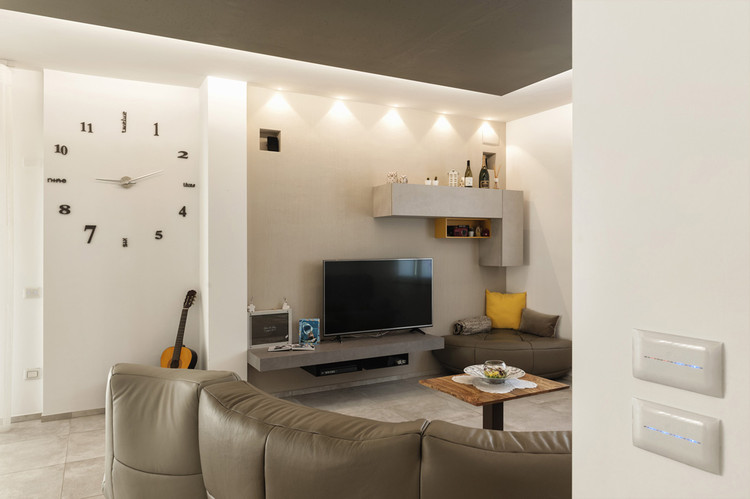
2. The user must identify what they really want to control
Once the user experiences home automation, they may want to control everything, without much reason. By definition, home automation seeks to be globally intelligent, so it must function as a system that facilitates processes, without unnecessarily complicating the user's life . Automating the operation of an iron or a coffee machine, for example, may not make a real difference in the user's quality of life. However, the ability to program lights, alarms and/or heating at certain times of the day, will.

3. It's more effective to apply home automation to 'generate integrated solutions,' than to fulfill individual functions
Once the needs of the user have been identified, it's advisable to plan integrated solutions that allow programming and controlling of environments . For example, when selecting a predefined environment for the night, the system will execute, in a single process, the attenuation and shutdown of lights, the closing of curtains, and the activation of the alarm. This doesn't prevent the management of each option separately, but it's easier and more effective to consider them, from the outset, as responses as a whole.

4. There is no difference between a traditional electrical plan and a domotics plan
When bringing home automation into a built project, the architect must simply define the locations of the switches and other devices, and the specific functions of each one of them. With this plan, the company in charge of the installation of the automation system is responsible for intervening the electrical installation on site, giving the specialist the instruction to incorporate the wiring required by the home automation . This UTP ( Unshielded Twisted Pair ) cabling is much simpler than the one traditionally used, and occupies a single pipeline.
It's important to point out that home automation must be included in the construction plan before beginning the heavy work since in more advanced stages the complete process becomes more complex.

5. In just a couple of hours, an electrical specialist can learn to install a home automation system
It's not necessary for the electrical specialist chosen by the architect or client to be an expert in home automation in order to install it. The training related to this process can be done in just a few hours.

6. Properly programmed, the home automation system greatly reduces the energy consumption of the building
In the case of hotels, home automation allows spaces and rooms that are not in use to be kept completely off, taking detailed control of the use that each guest gives to each room. For example, if a guest has the heating on in his room and opens a window, the thermal system will shut down to avoid energy waste. Even during the night, while the guest sleeps, the system can be programmed to reduce the temperature slightly, saving a large amount of energy without the user noticing.
In addition, in buildings that use three-phase systems , it's possible to determine a maximum monthly energy consumption, avoiding that the expense exceeds the predetermined limit at the end of the month. The control panel gives the user a complete detail of this consumption: daily, weekly, monthly or yearly.

7. Home automation can improve the quality of life for elderly or differently abled people
Through centralized control panels and motion sensors, home automation can greatly facilitate and support the way in which older adults or people with disabilities inhabit their daily spaces. Among other benefits, it is possible to program the lighting of lights at a certain time of the day, increasing its intensity with the passing of the hours, or turning on and off automatically when the person enters certain rooms . In addition, people with Parkinson's disease or other motor diseases can solve the handling of the switches without touching them.

8. Integrate alarms in the home automation system to control remote intrusions or dangers
Including the alarm in a home automation system avoids the need to connect to a central, notifying the user directly on his mobile phone and showing in detail which door or window has been intruded. If surveillance cameras have been included, it's possible to see in real time what is happening in the building.
In the case of other hazards, such as a gas or water leak, the system warns the user to close the passage of these elements, while a definitive solution to the problem is found.

Editor's Note: This article was published originally on January 08, 2019.

- Sustainability
想阅读文章的中文版本吗?

设计一个家庭自动化的智能家居的8个技巧
You've started following your first account, did you know.
You'll now receive updates based on what you follow! Personalize your stream and start following your favorite authors, offices and users.
What Is a Smart Home? The Pros and Cons, Explained
What is a smart home? Learn the basics of smart home technology and whether a smart home is right for you.
You've probably heard the term "smart home" a lot recently. But what exactly is a smart home? What makes it "smart" and why would someone be interested in converting their home?
We're going to walk you through the ins and outs of a smart home so that you know whether the technology is for you.
What Is a Smart Home?
A smart home is any home that uses some form of electronic device to control or automate everyday tasks. These homes often consolidate around a central hub that allows communication between all of the devices located in the house.
These devices can range from temperature sensors, smart thermostats, wall switches, smart plugs, water sensors, door and window sensors, motion sensors, and many other integrated devices. Like your smartphone—which does more than just allow you to make phone calls—a smart home can allow you to automate many of your home tasks.
For example, let's say you wanted to have your thermostat automatically decrease the temperature when you left for work in the morning. A smart home with an integrated thermostat could allow you to do that. Or, if you wanted to unlock your front door for guests, but you were stuck at the office, a well-equipped smart home would allow you to.
Finally, what if you wanted to turn off your Christmas lights at precisely 9 p.m. on Saturday and Sunday? A smart home with the proper setup could also allow you to automate this task. Some smart home devices can even vacuum your house or mow your lawn.
Smart homes save time, increase security, improve comfort, and make life more enjoyable for homeowners.
Related: What is a Smart Home Hub?
How Do Smart Homes Work?
The easiest way to describe how a smart home works is to think of the home like the human body. In most smart homes, there is a brain, which is often an app or a set of apps on a mobile device. This central device is known as a hub.
The hub directs all activity to the smart devices on the network. If the home is like a body, these devices are its limbs. Using the power of the internet and integrated connectivity, these devices get instructions from the hub and then perform certain mechanical behaviors based on those instructions.
The behaviors—called automations—can range from sending a text to a family member to turning on all of the lights in the house and engaging a security alarm.
Many people have built smart homes that perform complex tasks, and companies like Apple and SmartThings have included programming tools in their software to make creating these automations easier.
Related: The Best Smart Doorbells for Your Home
Smart Home Communication Protocols
To communicate with devices, smart home hubs need some sort of communication language that both the device and the hub understand. Because many smart home products exist on the market, several manufacturers have standardized these communication protocols. Rather than using several hundred protocols that don't work together, the smart home industry has narrowed it down to just a few: Zigbee, Z-Wave, Thread, KNX, Control4, Bluetooth, and Wi-Fi.
The most prominent protocols currently in use are Zigbee and Z-Wave. However, many manufacturers have begun to move more toward Thread as it offers some unique benefits over the other, more popular, protocols. Additionally, some Bluetooth devices don't need internet connectivity to function, which appeals to some people.
Related: What's the Difference Between Zigbee and Z-Wave?
Smart Home Benefits
What are some of the most significant benefits of a smart home? The most considerable benefit is convenience. Smart homes allow you to do things like control HVAC in your home from anywhere in the world (including your couch), turn lighting on or off, control external sprinkler systems, and even view guests arriving at your front door.
Most of these tasks can be completed using a mobile device or the smart home hub. You can even set up certain tasks to happen at specific times or on particular days. Setting a smart thermostat optimally or setting an irrigation system to stay off when it's raining are ways that smart homes can also save money.
Smart homes can also eliminate some of the hassles of access that plague some homeowners. If you have a dog-walker or a landscaping service, you can give those people access to your home even if you are away at work or on vacation.
Customization is also a significant benefit of smart homes. Because there are so many products available, you can tailor your home to your personal preference. Every smart home is as unique as its owner, and the possibilities are only as limited as your imagination.
Lastly, smart homes offer upgraded security benefits over a typical home. In-home cameras and doorbell cameras can make thieves think twice about trying to break in. Motion sensors and door/window sensors can also keep rambunctious teenagers from leaving the house without you knowing about it.
Smart Home Downsides
There are only a few minor issues that can come up with a smart home, and they all have to do with connectivity.
When a device malfunctions or loses its connection, it can create havoc. Because networks fail frequently, you may want to consider what alternative methods of control you have if a smart item stops working. Fortunately, these connectivity issues are usually only temporary.
Related: How to Reconnect a Smart Light Switch That Has Lost Connection
Getting Started With Your Smart Home
There are some great products available if you are interested in setting up a smart home. Though, it's best to plan out your installation before you go buying random tech. For many people, a smart home starter kit is an excellent place to begin the journey. These kits offer many standard devices, such as motion sensors and smart plugs, that you can experiment with before diving in deep.
You might also want to check out some of the most common products, such as smart bulbs or thermostats. Also, there are many uses for inexpensive smart plugs to get your creativity started. It's recommended that you brainstorm some ideas about how you might use these items before buying, though, just to make sure you're not wasting your money.
A Smarter Home Starts Here
Building your own smart home doesn't have to be complicated or expensive. Adding a few products at first and doing some experimentation can open the door to a home that offers much higher levels of convenience and comfort. By building a smart home, you're upgrading your security, customization, flexibility, and satisfaction.
You also don't need to buy a lot of products to consider your home smart. One or two is enough. Just know, if you really want to customize your space to its fullest potential, then the option is also available.
Study Like a Boss
Smart Houses
The world of computer technology is continuously advancing each and every day. We look back at what we had 5 years ago and are amazed to see how far we have come in such a short time. To know what to expect in the upcoming years is impossible, for technology is at such a constant increase. Computer technology is a wonderful tool and can benefit many people if you are willing to accept it. One of the advancements on the rise is Smart Houses. A Smart House is a house that is controlled by computers with artificial intelligence.
Many people are choosing to turn their houses into smart ones in order to create a safer and more technological environment. Throughout my report, I will discuss some features that I would include in my own smart house, such as safety and convenience. I think the most common reason that my house will be a smart house is for safety purposes. Not only does it give a peace of mind to know that my house is protected at all times, but it gives protection in times of danger.
Brinks Home Security provides several packages which you can accustom to your price range and allows you to pick the package which is right for your home. The standardized system is controlled by a digital keypad, which allows you to type in a 3-digit number that enables the system. It also features three panic buttons that directly contact the police department, the fire department, and the hospital in one quick touch of a button. This package comes with 2 door and window sensors that set the alarm off if they are opened while the system is armed.
It also comes with a motion detector that detects heat and body movements. If any of these features are triggered, a siren will sound which makes your family and the intruder aware that the Brinks monitoring center are being notified. Some extra features are a glass break protector, smoke & heat detectors, and carbon monoxide detectors. The system also provides a keyless keyfob that allows you to enable or disable the system with a touch of a quick button. As you can see, the Brinks Home Security provides a thorough package of home safety features.
Not only is it reliable, but also gives a secure way to keep your house safely protected. Other systems, such as the FireCracker Kit from X10. com , provide you with an affordable and easy system. It allows you to control all the systems in your house based from your computer. You can make your coffeepot start brewing or your turning off your lamp simply by the click of a mouse. Control all the lights in your house with your PC or with a remote. One touch of a button and your lights will be on, your heater turned up, and your bath tub already starting to get filled. How much better can it get?
I would also have a Robo-dog in my Smart House. This is a robotic dog, which features a motion sensor that puts the dog into a barking frenzy when it is set off. This not only scares the intruder, but it also notifies me that there is something wrong. The Robo-dog provides the benefits of a good guard dog without the inconvenience of attending to a pet. It would be placed near the door so if an intruder breaks in, then my guard dog will stop him in his tracks. There are many simple and affordable ways to keep your house, and mine, secure. Another common reason for a Smart House is convenience.
Imagine being able to control the temperature of your house or turning on your lights with one simple phone call. X10 provides just that . The touch-tone controller activates lights, reboots PCs and sets air for heating or air conditioning with a quick touch of a button. I can access this via any touch-tone phone or from the manual control keypad placed in my house. This gives the convenience of coming home to a warm, well-light house without having to go through the hassle of putting wood in the wood-stove or waiting for the heater to heat up the house.
A number of software programs are available that are needed to run a smart house. One of the programs suggested by the Home Automation Forum is the HomeSeer . This is a software program that allows you to run all of your computer-automated systemssuch as the touch-tone keypad. It has speech recognition and synthesis that allows you to control your programs simply by the sound of your voice. You simply need to program words into the system, such as bathroom light on and as soon as it recognizes your words, it turns the bathroom light on.
It also allows variations, so if you said bathroom on it would also perform the same task. It also has an email alert program. If something is irregular in your house, it will notify you via email as soon as it notices the problem. This will give you the security in knowing your house is protected and watched at all times. The inventor of HomeSeer, Rich Helmke, is currently working on a new program that is a tapi phone interface. This will give you all the control you want, as described by the Home Automation Forum.
A variety of free downloads of HomeSeer for trial offers are available at http://keware. com/download. htm#hscm11. As you can see, the possibilities for a Smart Houses are endless. Home automation is on a rise and soon we will no longer have to worry about those tedious tasks that are so time consuming in our daily lives. Cooking & cleaning wont even be a concern anymore, for your smart house will provide you with the living environment you desire. Consider making your house a smart house and provide your family with the security and convenience that they deserve.
To export a reference to this article please select a referencing style below:
Related posts:
- The Symbolism of Houses and Cars
- The Great Gatsby: Symbolism of Houses and Cars
- Comparing the Symbolism of the Houses in the Red Death and House of Usher
- The Great Gatsby: Symbolism Of Houses And Cars
- The Basics of A Hard Drive
- Model Train Building
- Canada’s Copyright Law
- Battle Chess
- Computer Fraud and Crimes
- Discuss the function of the DMA controller chip in a computer system
- Computer crime history
- Chapter Account Manager
- An Evaluation Of Nullsoft Winamp
- Computer crime in world
Leave a Comment Cancel reply
Save my name, email, and website in this browser for the next time I comment.
Search form

How is technology changing the homes we live in? How can hi-tech homes help old people to live independently? Read the article to find out about research and development into smarthomes in the UK.
Instructions
Do the preparation task first to help you with the difficult vocabulary. Then read the article and do the exercises to check your understanding.
Preparation
People taking care of the elderly or sick at home may get help from the house itself.
Big changes
The beginning of the 21st century saw a revolution in home-living with new technology changing the places where we live, from the wireless internet to TV screens that hang on walls, and it seems technology could be changing our homes again. A project conducted by Johann Siau, Senior Lecturer at the University of Hertfordshire’s School of Engineering and Technology, builds on the University’s InterHome project – aiming to create a home that monitors people living at home who are frail or elderly.
The InterHome
‘We’ve developed a wrist-band type device,’ says Johann Siau, ‘which allows us to monitor the condition of an elderly person, or whoever is wearing the device. It allows us to collect data of a person, to detect if the person has fallen or is away from where they are supposed to be. It connects an elderly person with an assisted-living type device with the InterHome.’ The assisted-living project is part of the University’s wider InterHome project, which is the development of a smart house. The house stores the usage patterns of the person living there and can adapt to make it as energy efficient as possible. ‘Linking the two together, and building the service element, allows us to introduce the assisted-living idea to care for the elderly. It’s very important that these technologies are there to help and support rather than to replace any of the existing services.’
Built from zero
The InterHome is not just a prototype (a doll’s house at the moment) or a vehicle for research, it’s a study tool where students from a range of scientific disciplines get to learn and develop technology. The InterHome incorporates the latest broadband technology, mobile data and communication. Researchers and students make sure all the technology works together. ‘We’ve used this to teach our undergraduate students, as well as our postgraduate students, and gives us the flexibility to be able to design our systems because the hardware and software is developed in-house.’ It requires a variety of skills from students – electronic engineers, embedded-system engineers, computer students, design students. ‘The current plan we are working on is a smart home project in Watford with some commercial companies,’ says Johann Siau. ‘We are looking at how a smarter home can provide extra value services.’
Check your understanding: true or false
Check your vocabulary: gap fill, worksheets and downloads.
What do you think houses are going to be like in the future? Will we all live in smarthomes?

Sign up to our newsletter for LearnEnglish Teens
We will process your data to send you our newsletter and updates based on your consent. You can unsubscribe at any time by clicking the "unsubscribe" link at the bottom of every email. Read our privacy policy for more information.

Green City Planning and Practices in Asian Cities pp 39–76 Cite as
How Green Is Your Smart House: Looking Back to the Original Concept of the Smart House
- Puteri Fitriaty 6 , 7 ,
- Zhenjiang Shen 8 &
- Kenichi Sugihara 9
- First Online: 22 March 2018
2276 Accesses
4 Citations
Part of the book series: Strategies for Sustainability ((SPPSDE))
The smart house has been a growing field of interest among researchers and entrepreneurs in recent years. The smart house is designed to create a high quality of life based on technologies of functional automation within residential buildings. It provides a platform to monitor and control certain appliances in the house environment. The concept of the smart house is discussed in this chapter.
An in-depth literature study of the smart house was conducted to establish smart house principles and parameters, then these were compared with the principles and parameters of the green house to identified the similarities and the differences between those two concepts. Concept and parameter implementation of the smart house in practice was investigated through a field survey and online materials. Japan, as one of the leading countries in smart house technology, was chosen as a case study. Six smart houses were selected to evaluate the concept implementation and compare smart house concepts with those of the green house.
The results showed that the smart house concept and the green house concept have an intersection of sets relationship. The intersection set parameters are the parameters included in the principles of respect for users, conservation of energy and water, and working with the climate.
- Energy efficient
- Green concept
- Smart house parameters
- Quality of life
This is a preview of subscription content, log in via an institution .
Abushnaf J, Rassau A, Gornisiewicz W (2015) Impact of dynamic energy pricing schemes on a novel multi-user home energy management system. Electr Power Syst Res 125:124–132. https://doi.org/10.1016/j.epsr.2015.04.003
Article Google Scholar
Alaiad A, Al-ayyad M (2015) Smart home healthcare settings: a qualitative study of the domain boundary boundary. Transactions of the International Conference on Health Information Technology Advancement, 3(1), pp 108–121. Available at: http://scholarworks.wmich.edu/ichita_transactions/50/
Aldrich FK (2003) Smart homes past, present and future. In: Harper R (ed) Inside the smart home. Springer, London, pp 17–39
Chapter Google Scholar
Allen B (1996) An integrated approach to smart house technology for people with disabilities. Med Eng Phys 18(3):203–206
Al-Muhtadi J et al (2000) Secure smart homes using Jini and UIUC SESAME. In: Proceedings – annual computer security applications conference, ACSAC, (January), pp 77–85
Google Scholar
Arcelus A et al. (2007) Integration of smart home technologies in a health monitoring system for the elderly. In: BT – 21st international conference on advanced information networking and applications workshops. IEEE Computer Society, pp 820–825
Association Franco-Chinoise du Developpement Urbain Durable (n.d.) The history of smart homes. Available at: http://www.afcdud.com/fr/smart-city/422-how-the-history-of-smart-homes.html . Accessed 31 May 2017
Badica C, Brezovan M, Badica A (2013) An overview of smart home environments: architectures, technologies and applications. CEUR Workshop Proceedings 1036(i):78–85. Available at: http://ceur-ws.org/Vol-1036/p78-Badica.pdf
Balta-Ozkan N et al (2013a) Social barriers to the adoption of smart homes. Energy Policy 63:363–374. https://doi.org/10.1016/j.enpol.2013.08.043
Balta-Ozkan N et al (2013b) The development of smart homes market in the UK. Energy 60:361–372. https://doi.org/10.1016/j.energy.2013.08.004
Baraka K, et al (2013) Low cost Arduino/Android-based energy-efficient home automation system with smart task scheduling. In: 2013 Fifth international conference on computational intelligence, communication systems and networks, pp 296–301
Beaudin M, Zareipour H (2015) Home energy management systems: a review of modelling and complexity. Renew Sust Energ Rev 45:318–335. https://doi.org/10.1016/j.rser.2015.01.046
Behan M, Krejcar O (2013) Vision of smart home point solution as sustainable intelligent house concept, IFAC. Available at: https://doi.org/10.3182/20130925-3-CZ-3023.00057
Bhati A, Hansen M, Chan CM (2017) Energy conservation through smart homes in a smart city: a lesson for Singapore households. Energy Policy 104(February):230–239. https://doi.org/10.1016/j.enpol.2017.01.032
Bounegru L (2009) Smart houses: from managing the house at a distance to the management of life itself. Available at: http://lilianabounegru.org/wp-content/uploads/2009/11/thesis_smart_houses_liliana_bounegru.pdf
Cassie (2015) The history of home automation. p 2. Available at: https://myalarmcenter.com/blog/the-history-of-home-automation/ . Accessed 28 May 2017
Chan M et al (1995) Smart house automation system for the elderly and the disabled. In: 1995 IEEE international conference on systems, man and cybernetics intelligent systems for the 21st century, 2, pp 1586–1589
Chan M et al (2008) A review of smart homes—present state and future challenges. Comput Methods Prog Biomed 91(1):55–81
Chan M et al (2009) Smart homes—current features and future perspectives. Maturitas 64(2):90–97
Cocco J (2011) Smart home technology for the elderly and the need for regulation. J Environ Public Health Law 6(1):85–108
Cook D (2012) How smart is your home? Science, 335(6076), pp 1579–1581. Available at: http://www.sciencemag.org.proxy.library.cornell.edu/content/335/6076/1579.full%5Cnfile:///Users/raj/Dropbox/Papers_dropbox/Papers/Cook/Cook_How Smart Is Your Home?_Science_2012.pdf%5Cnpapers://5860649b-6292-421d-b3aa-1b17a5231ec5/Paper/p120433
Coughlin JF et al (2007) Older adult perceptions of smart home technologies: implications for research, policy & market innovations in healthcare. In: Annual international conference of the IEEE engineering in medicine and biology – proceedings, (August), pp 1810–1815
Covington M, Moyer M, Ahamad M (2000) Generalized role-based access control for securing future applications. In: 23rd national information systems security conference, (NISSC 2000). pp 1–10. Available at: http://smartech.gatech.edu/handle/1853/6580
Daiwa House Group (n.d.) Daiwa Smart Houses “SMAxECO.” Available at: http://www.daiwahouse.com/English/sustainable/eco/products/smarthouse.html . Accessed 28 May 2017
De Silva LC, Morikawa C, Petra IM (2012) State of the art of smart homes. Eng Appl Artif Intell 25(7):1313–1321. https://doi.org/10.1016/j.engappai.2012.05.002
Demongeot J et al (2002) Multi-sensors acquisition, data fusion, knowledge mining and alarm triggering in health smart homes for elderly people. C R Bio 325(6):673–682
Ding D et al (2011) Sensor technology for smart homes. Maturitas 69(2):131–136. https://doi.org/10.1016/j.maturitas.2011.03.016
Edge M, Taylor B, Dewsbury G, Gordon TR, Groves MA, Columbia B et al (2000) The potential for “Smart Home” systems in meeting the care needs of older persons and people with disabilities. Senior Housing Update 10(1):6–7
El-Baz W, Tzscheutschler P (2015) Short-term smart learning electrical load prediction algorithm for home energy management systems. Appl Energy 147:10–19. https://doi.org/10.1016/j.apenergy.2015.01.122
El-Sebaii AA et al (2010) Global, direct and diffuse solar radiation on horizontal and tilted surfaces in Jeddah, Saudi Arabia. Appl Energy 87(2):568–576. Available at: http://linkinghub.elsevier.com/retrieve/pii/S0306261909002700
Fabi V, Spigliantini G, Corgnati SP (2017) Insights on smart home concept and occupants’ interaction with building controls. Energy Procedia 111(September 2016):759–769. Available at: http://www.sciencedirect.com.sdl.idm.oclc.org/science/article/pii/S1876610217302680
Farella E, Falavigna M, Ricc B (2010) Aware and smart environments: the Casattenta project. Microelectron J 41(11):697–702
Fensel A, Tomic S, Kumar V (2013) Sesame-s: semantic smart home system for energy efficiency. Informatik-Spektrum 36(1):46–57. Available at: http://link.springer.com/article/10.1007/s00287-012-0665-9
Firth SK et al (2013) Decision support systems for domestic retrofit provision using smart home data streams. In: CIB W78 30th international conference on applications of IT in the AEC industry. Move towards smart buildings: infrastructures and cities. Beijing: CIB, p 10 pages. Available at: https://dspace.lboro.ac.uk/dspace-jspui/handle/2134/15904
Fotouhi Ghazvini MA et al (2017) Demand response implementation in smart households. Energ Buildings 143:129–148. Available at: http://linkinghub.elsevier.com/retrieve/pii/S037877881730823X
Friedewald M et al (2005) Perspectives of ambient intelligence in the home environment. Telematics Inform 22(3):221–238
Gayathri KS, Easwarakumar KS (2016) Intelligent decision support system for dementia care through smart home. Procedia Comput Sci, 93(September), pp 947–955. Available at: https://doi.org/10.1016/j.procs.2016.07.281
GhaffarianHoseini AH et al (2013) The essence of future smart houses: from embedding ICT to adapting to sustainability principles. Renew Sust Energ Rev 24:593–607. https://doi.org/10.1016/j.rser.2013.02.032
Gillani Fahad L, Khan A, Rajarajan M (2015) Activity recognition in smart homes with self verification of assignments. Neurocomputing, 149(PC), pp 1286–1298. Available at: https://doi.org/10.1016/j.neucom.2014.08.069
Han J, Choi C s, Lee I (2011) More efficient home energy management system based on ZigBee communication and infrared remote controls. IEEE Trans Consum Electron 57(1):85–89
Han J et al (2014) Smart home energy management system including renewable energy based on ZigBee and PLC. IEEE Trans Consum Electron 60(2):198–202
Helal A, Cook DJ, Schmalz M (2009) Smart home-based health platform for behavioral monitoring and alteration of diabetes patients. J Diabetes Sci Technol (Online) 3(1):141–148
Hendricks D (2014) The history of smart homes. (April 22th). Available at: http://www.iotevolutionworld.com/m2m/articles/376816-history-smart-homes.htm . Accessed 9 May 2017
Hong X et al (2009) Evidential fusion of sensor data for activity recognition in smart homes. Pervasive Mob Comput 5(3):236–252. https://doi.org/10.1016/j.pmcj.2008.05.002
Honold J, Wimmer P, Kandler C (2015) Potential of energy management systems in residential buildings. Energy Procedia 78:2094–2099. Available at: http://www.sciencedirect.com/science/article/pii/S1876610215019773
Institute of Industrial Science Tokyo University (2014) COMMA House., (February). Available at: http://www.commahouse.iis.u-tokyo.ac.jp/sozai/publication/release_20140204.pdf . Accessed 29 May 2017
Iwafune Y et al (2015) Cooperative home energy management using batteries for a photovoltaic system considering the diversity of households. Energy Convers Manag 96:322–329. https://doi.org/10.1016/j.enconman.2015.02.083
Jahn M et al (2010) The energy aware smart home. In: 2010 5th international conference on future information technology, pp 1–8
Japan LP Gas Association (2015) Home-use fuel cell (ENE-FARM). Available at: http://www.j-lpgas.gr.jp/en/appliances/ . Accessed 29 May 2017
Jurenoks A, Joki D (2017) Sensor network information flow control method with static coordinator within internet of things in smart house environment. Procedia Comput Sci 104:385–392
Keskin Arabul F et al (2017) Providing energy management of a fuel cell–battery–wind turbine–solar panel hybrid off grid smart home system. Int J Hydrog Energy. Available at: http://www.sciencedirect.com/science/article/pii/S0360319917308303
Khan AA et al (2015) HEMSs and enabled demand response in electricity market: an overview. Renew Sust Energ Rev 42:773–785
Kim H et al (2012) Implementing home energy management system with UPnP and mobile applications. Comput Commun 36(1):51–62. https://doi.org/10.1016/j.comcom.2012.01.007
Kim MJ et al (2013) A critical review of user studies on healthy smart homes. Indoor and Built Environment 22(1):260–270. Available at: http://journals.sagepub.com/doi/10.1177/1420326X12469733
King L (2015) The evolution of the smart home., (April 15th). Available at: https://www.raconteur.net/technology/the-evolution-of-the-smart-home . Accessed 9 May 2017
Kofler MJ, Reinisch C, Kastner W (2012) A semantic representation of energy-related information in future smart homes. Energ Buildings 47:169–179. https://doi.org/10.1016/j.enbuild.2011.11.044
Kuusik A (2001) Engineering approach for realization of small smart home systems. IFAC Proceedings Volumes 34(9):403–407. Available at: http://linkinghub.elsevier.com/retrieve/pii/S1474667017417393
Lee W et al (2016) Automatic agent generation for IoT-based smart house simulator. Neurocomputing 209:14–24. https://doi.org/10.1016/j.neucom.2015.04.130
LIXIL (2015) LIXILの研究施設「 U2-Home ユースクウェアホーム 」にてIoTを活用した『住生活の未来』に関する実証実験を実施~2015年度には、ビッグデータ を活用した高度利用の研究に着手~ (LIXIL demonstration experiment on ‘future of housing life’ employing IoT at LIXIL’s research facility “U2-Home” carried out in 2015 by utilizing big data for advanced use). LIXIL News—Link to Good Living. Available at: http://newsrelease.lixil.co.jp/news/2015/070_company_0331_02.html
Lobaccaro G, Carlucci S, Lofstrom E (2016) A review of systems and technologies for smart homes and smart grids. Energies 9(5):1–33
Louis J-N et al (2015) Environmental impacts and benefits of smart home automation: life cycle assessment of home energy management system. IFAC-PapersOnLine 48(1):880–885. Available at: http://www.sciencedirect.com/science/article/pii/S2405896315001597
Luor T et al (2015) Exploring the critical quality attributes and models of smart homes. Maturitas 82(4):377–386. https://doi.org/10.1016/j.maturitas.2015.07.025
Lutolf R (1992) Smart home concept and the integration of energy meters into a home based system. In: Seventh International Conference on Metering Apparatus and Tariffs for Electricity Supply 1992, pp 277–278
Mano LY et al (2016) Exploiting IoT technologies for enhancing health smart homes through patient identification and emotion recognition. Comput Commun 89–90:178–190. https://doi.org/10.1016/j.comcom.2016.03.010
MIT Media Lab (1995) Smart rooms. Available at: http://vismod.media.mit.edu/vismod/demos/smartroom/ . Accessed 31 May 2017
Missaoui R et al (2014) Managing energy smart homes according to energy prices: analysis of a building energy management system. Energy Build 71:155–167. https://doi.org/10.1016/j.enbuild.2013.12.018
Morris ME et al (2013) Smart-home technologies to assist older people to live well at home. Aging Sci 1(1):1–9. https://doi.org/10.4172/jasc.1000101
Mozer MC (1998) The neural network house: an environment that adapts to its inhabitants. In: American Association for Artificial Intelligence Spring Symposium on Intelligent Environments, pp 110–114
Nice Home Co (2017) Making houses for nice homes. pp 1–9. Available at: http://www.nice-home.jp/style/ . Accessed 31 May 2017
Ozkan HA (2015) A new real time home power management system. Energ Buildings 97:56–64. https://doi.org/10.1016/j.enbuild.2015.03.038
Panasonic C (2012) How can we build next-generation houses in which comfortable living leads to eco friendliness. PanaHome Smart Houses. Available at: https://panasonic.net/es/solution-works/smart_house/ . Accessed 29 May 2017
Park KH, Lee HEL, Bien Z (2008) A steward robot to help daily activities in a smart house environment. In: IFAC. https://doi.org/10.3182/20080706-5-KR-1001.01988
Pensas H, Raula H, Vanhala J (2009) Energy efficient sensor network with service discovery for smart home environments. In: 2009 Third International Conference on Sensor Technologies and Applications, pp 399–404
Pragnell M, Spence L, Moore R (2000) The market potential for smart homes. In: York. Available at: http://opensigle.inist.fr/handle/10068/582797
Premarathne US, Khalil I, Atiquzzaman M (2016) Trust based reliable transmissions strategies for smart home energy consumption management in cognitive radio based smart grid. Ad Hoc Netw 41:15–29. Available at: http://www.sciencedirect.com/science/article/pii/S1570870515300032
Risteska Stojkoska BL, Trivodaliev KV (2017) A review of internet of things for smart home: challenges and solutions. J Clean Prod 140:1454–1464. https://doi.org/10.1016/j.jclepro.2016.10.006
Roda C et al (2014) Home energy management system. Schneider Electric Industries SAS, (May). Available at: https://www.researchgate.net/profile/Cesar_Roda/publication/274780353_Home_Energy_Management_System/links/5529c17b0cf2779ab790ca5d.pdf/download?version=va
Rokach JZ (2012) Smart houses in a world of smart grids. Electr J 25(3):94–97
Rollins S et al (2014) A system for collecting activity annotations for home energy management. Pervasive Mob Comput 15:153–165. https://doi.org/10.1016/j.pmcj.2014.05.008
Rothfeld L (2015) The smart home. (January 8th), pp 28–29. Available at: http://mashable.com/2015/01/08/smart-home-tech-ces/#DgN40603Pkqo . Accessed 9 May 2017
Shakeri M et al (2017) An intelligent system architecture in home energy management systems (HEMS) for efficient demand response in smart grid. Energ Buildings 138:154–164. Available at: http://linkinghub.elsevier.com/retrieve/pii/S0378778816318369
Sintov N, Schultz P (2017) Adjustable green defaults can help make smart homes more sustainable. Sustainability 9(4): 622. Available at: http://www.mdpi.com/2071-1050/9/4/622
Skubic M et al (2009) Smart home application for elder care current status and lessons learned. Technol Health Care 17:183–201
Solaimani S, Keijzer-Broers W, Bouwman H (2015) What we do – and don’t – know about the smart home: an analysis of the smart home literature. Indoor and Built Environment 24(3):370–383. Available at: http://journals.sagepub.com/doi/10.1177/1420326X13516350
Spigel L (2005) Designing the smart house: posthuman domesticity and conspicuous production. Eur J Cult Stud 8(4):403–426. Available at: http://ecs.sagepub.com/cgi/doi/10.1177/1367549405057826
Stauffer HB (1991) Smart enabling system for home automation. IEEE Trans Consum Electron 37(2):xxix–xxxv
Strengers Y, Nicholls L (2017) Convenience and energy consumption in the smart home of the future: industry visions from Australia and beyond. Energy Res Soc Sci, p 8 pages. Available at: https://doi.org/10.1016/j.erss.2017.02.008
Sundstrom C, Krysander M (2015) Smart energy usage for vehicle charging and house heating. IFAC-PapersOnLine 28(15):224–229. https://doi.org/10.1016/j.ifacol.2015.10.032
Tang P, Venables T (2000) “Smart” homes and telecare for independent living. J Telemed Telecare 6(1):8–14. Available at: http://journals.sagepub.com/doi/10.1258/1357633001933871
Tomita MR et al (2010) Smart home with healthcare technologies for community-dwelling older adults. In: Al-Qutayri MA (ed) Smart Home System. InTech, Rijeka, pp 139–158. Available at: http://www.intechopen.com/source/pdfs/9628/InTech-Smart_home_with_healthcare_technologies_for_community_dwelling_older_adults.pdf
Toyota Ecoful Town (2017) 出展企業紹介ナイスホーム株式会社 (Exhibitor Introduction of Nice Home Co., Ltd.). Available at: http://toyotaecofultown.com/news/ . Accessed 31 May 2017
Vale B, Vale R (1996) Green architecture: design for a sustainable future. Thames and Hudson, London
Van Berlo A (1999) Design guidelines on smart homes. In: A COST 219bis Guidebook. European Co-Operation in the Field of Scientific and Technical Research, COST. Available at: https://books.google.co.jp/books?id=k60HGwAACAAJ
Vega AM, Santamaria F, Rivas E (2015) Modeling for home electric energy management: a review. Renew Sust Energ Rev 52(2015):948–959. https://doi.org/10.1016/j.rser.2015.07.023
Wang C et al (2015) Robust optimization for load scheduling of a smart home with photovoltaic system. Energy Convers Manag 102:247–257. https://doi.org/10.1016/j.enconman.2015.01.053
Warren S, Craft RL (1999) Designing smart health care technology into the home of the future. In: Proceedings of the first joint BMES/EMBS conference. 1999 IEEE Engineering in Medicine and Biology 21st annual conference and the 1999 annual fall meeting of the Biomedical Engineering Society (Cat. No.99CH37015), 2(505), p. 677. Available at: http://ieeexplore.ieee.org/document/803832/
Wikipedia (2017) Home automation. Wikipedia. Available at: https://en.wikipedia.org/wiki/Home_automation [Accessed 29 May 2017]
Wilson C, Hargreaves T, Hauxwell-Baldwin R (2015) Smart homes and their users: a systematic analysis and key challenges. Pers Ubiquit Comput 19(2):463–476
Wood G, Newborough M (2007) Energy-use information transfer for intelligent homes: enabling energy conservation with central and local displays. Energ Buildings 39(4):495–503
Yoza A et al (2013) Optimal operation method of smart house by controllable loads based on smart grid topology. Int J Emerg Electr Power Syst 14(5):411–420. https://doi.org/10.1016/j.renene.2011.07.026
Yoza A et al (2014) Optimal capacity and expansion planning methodology of PV and battery in smart house. Renew Energy 69:25–33. https://doi.org/10.1016/j.renene.2014.03.030
Zhang W et al (2015) Experimental and computational study for household equipment system in a smart house with solar collectors. Energy Procedia 78:3428–3433. https://doi.org/10.1016/j.egypro.2015.12.329
Zhou B et al (2016) Smart home energy management systems: concept, configurations, and scheduling strategies. Renew Sust Energ Rev 61:30–40. Available at: http://www.sciencedirect.com/science/article/pii/S1364032116002823
Ziefle M, Rocker C, Holzinger A (2011) Medical technology in smart homes: exploring the user’s perspective on privacy, intimacy and trust. In: Proceedings—35th International Computer Software and Applications Conference, pp 410–415
Download references
Acknowledgments
The authors are grateful to JSPS (C) for providing funds through the Urban Planning Laboratory (project no. 15 K06354), Kanazawa University.
Author information
Authors and affiliations.
Architectural Department, Engineering Faculty, Tadulako University, Palu, Indonesia
Puteri Fitriaty
Urban Planning Laboratory, Environmental Design Division, Graduate School of Natural Science and Technology, Kanazawa University, Kanazawa, Japan
School of Natural Science and Technology, Environmental Design Division, Kanazawa University, Kanazawa City, Japan
Zhenjiang Shen
Faculty of Information Media, Gifu Keizai University, Ogaki, Japan
Kenichi Sugihara
You can also search for this author in PubMed Google Scholar
Corresponding author
Correspondence to Zhenjiang Shen .
Editor information
Editors and affiliations.
Faculty of Architecture and Urban Planning, Chongqing University, Chongqing, Chong Qing, China
Institute of Design, Taipei University of Technology, Taipei City, Taipei, Taiwan
KuangHui Peng
Chengchi University, Taipei, Taiwan
Rights and permissions
Reprints and permissions
Copyright information
© 2018 Springer International Publishing AG, part of Springer Nature
About this chapter
Cite this chapter.
Fitriaty, P., Shen, Z., Sugihara, K. (2018). How Green Is Your Smart House: Looking Back to the Original Concept of the Smart House. In: Shen, Z., Huang, L., Peng, K., Pai, J. (eds) Green City Planning and Practices in Asian Cities. Strategies for Sustainability(). Springer, Cham. https://doi.org/10.1007/978-3-319-70025-0_3
Download citation
DOI : https://doi.org/10.1007/978-3-319-70025-0_3
Published : 22 March 2018
Publisher Name : Springer, Cham
Print ISBN : 978-3-319-70024-3
Online ISBN : 978-3-319-70025-0
eBook Packages : Earth and Environmental Science Earth and Environmental Science (R0)
Share this chapter
Anyone you share the following link with will be able to read this content:
Sorry, a shareable link is not currently available for this article.
Provided by the Springer Nature SharedIt content-sharing initiative
- Publish with us
Policies and ethics
- Find a journal
- Track your research

How smart homes have changed architecture guide
How smart homes have changed architecture advice, Modern house guide, Online property help tips
How Smart Homes Have Changed Architecture
9 October 2021
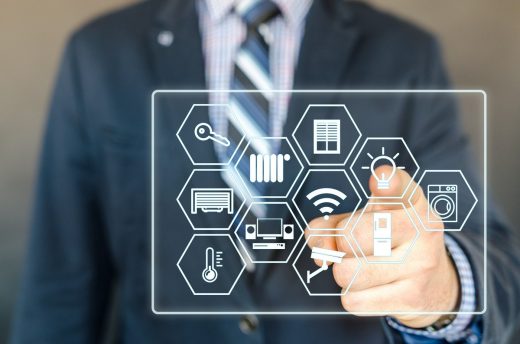
Do you dream of turning your house into a digital home where all the systems will work in unison and can be controlled remotely using your smartphone! If you have an affirmative response, then you have come to the right place.
How Smart Homes Have Changed Design
Today we are going to discuss how the trend of smart homes has been imparting a facelift to the architecture industry:
- Most modern-day homes rely on cables and cords. This makes it imperative for a designer to take the wiring into account while coming up with home renovation ideas. Doing this often limits their potential. The wireless capabilities of a smart home architecture can change all of that so that architects can enjoy greater freedom in their work.
- Lighting has a big role to play in affecting our moods and concentration levels. Warm lighting induces a relaxed feel whereas blue light boosts up our energy meter during the daytime so that we can focus more on our tasks. The pre-set schedules are followed by smart lighting for ensuring the right atmosphere before you set foot inside your house.
- The ambiance of our home is improved to a great extent by natural light entering our space at the right time. This is where the pre-set modes of smart curtains come into play so that we can wake up to the gentle sun rays caressing our faces at daybreak. It can also help in the creation of a secluded sleeping atmosphere at night.
These curtains can add to the safety quotient of your homes by randomly opening and closing even when the house is empty so that outsiders can’t comprehend if you are out on a vacation. Your energy bills will reduce drastically as the smart curtains help maintain your desired temperature by keeping the heat in or out. Geolocation data from your phone alerts the system whenever you leave home so that curtains can insulate during winter and keep heat out during summer.
- Music never fails to create the right atmosphere whether you are cooking in the kitchen or working in the garage. The process of integrating audio systems in your existing home architecture can be a challenging drill. Custom-designed or nearly invisible speakers can solve this issue by matching your house ambiance and offering utmost flexibility whether you wish to listen to music in a particular or all the rooms of your house. Smart audio systems make it possible to play the same audio simultaneously in all rooms or different tracks for different rooms.
- We rarely enjoy doing household chores. Smart appliances can make this process easier by taking care of all the house chores quickly and efficiently. A simple tap of a button is all it takes to remotely vacuum your living room, cook a pot roast and even make coffee. You can take the example of Samsung refrigerators which bank on built-in cameras to remotely view the contents inside the fridge for easy shopping.
A smart home comprises multiple devices which remain connected with the internet through your broadband – https://www.broadbandchoices.co.uk/broadband/cheap-deals . This acts as a medium of accessing the devices either through remote or voice control. Herein lies the importance of choosing a proper broadband connection that can render adequate support to your home devices without succumbing to network issues.
It is also important to get a heavy-duty smartphone that can exercise remote control over your devices. The smartphone market is filled with phone deals and you can take your pick among the various options after considering your specific requirements. Since the internet has a big role to play in determining the efficacy of your smart home, you can choose amongst sim-only deals with superb data capacity so that you can control your home appliances directly using your smartphone. All the architectural trends listed above can impart a facelift to your home design and help transition into a smart home.
Comments on this guide to how smart homes have changed architecture article are welcome.
Smart Home Design
Smart Home Design Articles
6 Smart Home Devices Compatible with Amazon Alexa
How growing demand for smart homes changes design
Smart Home Accessories
Building Articles
Residential Architecture
House Designs
Interior designs + architects
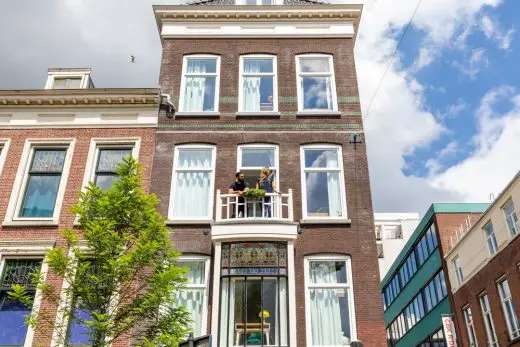
Comments / photos for the How smart homes have changed architecture guide page welcome
Read what our clients have to say about our writing essay services!
Emery Evans
Amount to be Paid
Eloise Braun
Niamh Chamberlain
Gain recognition with the help of my essay writer
Generally, our writers, who will write my essay for me, have the responsibility to show their determination in writing the essay for you, but there is more they can do. They can ease your admission process for higher education and write various personal statements, cover letters, admission write-up, and many more. Brilliant drafts for your business studies course, ranging from market analysis to business proposal, can also be done by them. Be it any kind of a draft- the experts have the potential to dig in deep before writing. Doing ‘my draft’ with the utmost efficiency is what matters to us the most.
Watch CBS News
Buy one of the 6 best smart locks in 2024 and ditch your house keys forever
By Jason R. Rich
Updated on: April 2, 2024 / 6:27 PM EDT / Essentials
CBS Essentials is created independently of the CBS News editorial staff. We may receive commissions from some links to products on this page. Promotions are subject to availability and retailer terms.
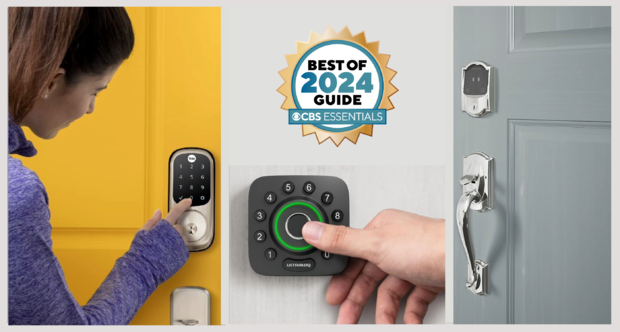
Tired of losing your house keys?
The latest smart locks work with any door that already has a dead bolt, and you can control them from anywhere using your smartphone. And if you don't like using your phone, no worries; some of the best smart locks also have a built in keypad, so you can create a personal code for each member of your household, as well as temporary codes that only work once for, say, a petsitter or housekeeper.
On their own, a smart lock adds an added level of security to any home. But they get even handier when you bundle them with a video doorbell and home security cameras . You can see who's at your door and, if you like, even let them in when you're not there.
And if you have other gear such as a smart thermostat or smart lighting you can control all of it, including a new smart lock, from the same smartphone app, like the Apple Home app on an iPhone or the Google Home app on an Android device.
- Best smart lock overall : Schlage Encode Plus

Best budget smart lock : Ultraloq U-Bolt Pro
- Best smart lock for easy installation : August Wi-Fi Smart Lock
Best smart lock with easy share e-keys : Lockly Secure Plus Deadbolt
Best smart lock and video doorbell combo : eufy security e330.
- Best smart lock with a keypad : Yale Assure Lock
What is the best smart lock pick in 2024?
Our consumer tech gurus have curated this collection of the best smart locks available. Each selection offers something unique, as well as -- of course -- a new level of home security that makes it easier to make your home safer.
Best smart lock overall : Schlage Encode Plus

Entry methods : Smartphone, keypad, metal key | Wi-Fi support : Yes | Battery : 4x "AA" batteries | Waterproof : Certified Commercial Grade 1 (not IP rated) | Dimensions : 5 x 3 x 0.9 inches | Color/finish options : 4 color, 2 style options | Auto lock feature : No | Compatibility : iOS, Android, Apple HomeKit, Amazon Alexa, Google Assistant, Schlage Home app
The Schlage Encode Plus is a Wi-Fi enabled smart lock that you can remotely control using your smartphone or voice. Create up to 100 passcodes for household members and guests. The lock is easy to install and uses AA batteries that'll last for up to six months. As a backup, the lock works with a supplied metal key.
Choose between four finish colors and two design styles -- Camelot (shown here) or Century (a more modern design). Using a smartphone app, you can see a log of when people come and go from your home, receive customizable notifications and manage multiple locks at the same time.
There's also a customizable alarm that senses door movement and break-in attempts. Installation can be done using just a screwdriver. No hardwiring is required.
Meanwhile, an auto-lock feature conveniently re-locks the door for you when you leave. It has a variety of time-delay options to choose from. The lock also provides one-touch locking from the exterior touchscreen, which makes locking up super easy.

Entry methods : Smartphone, keypad, biometric, metal key | Wi-Fi support : Yes | Battery : 4x "AA" batteries | Waterproof : IP65 rated | Dimensions : 2.95 x 1.22 x 2.95 inches | Color/finish options : Zinc | Auto lock feature : Yes | Compatibility : iOS, Android, Amazon Alexa, Google Assistant, SmartThings, IFTTT
When it comes to keyless smart locks, you can't go wrong with the competitively priced Ultraloq U-Bolt Pro. Control it using a smartphone, or a biometric fingerprint sensor and numeric keypad built into the lock.
We like that this lock offers easy installation and is waterproof (IP65 rated). One really useful feature is the lock's geofencing capabilities; if you like, the U-Bolt Pro will automatically unlock whenever you approach. You can also program e-key passcodes that offer permanent access, or that can only be used only on certain dates or preset times.
The lock itself is made from premium and durable metal. Installation can be done using just a screwdriver, with no hardwiring or drilling required -- as long as you're replacing a standard deadbolt lock. The four AA batteries used to power the lock will work up to 8,000 times before needing to be replaced.
Best smart lock for easy installation : August Wi-Fi smart lock (4th Gen)
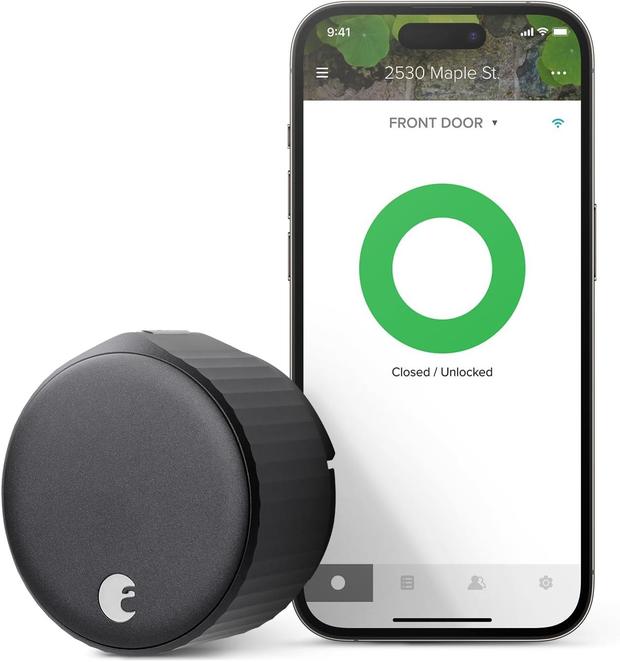
Entry methods : Smartphone, biometrics | Wi-Fi support : Yes | Battery : 2x CR123A (included) | Waterproof : No | Dimensions : 2.8 x 2.8 x 2.75 inches | Color/finish options : Matte black, silver | Auto lock feature : Yes | Compatibility : iOS, Android, Amazon Alexa, Google Assistant, Apple HomeKit (Siri), Samsung SmartThings, Apple Watch
One of the great things about this smart lock is that it sits on the inside of your door, right over your existing deadbolt lock. Installation takes just minutes. Control it remotely using your smartphone, or gain entry using a fingerprint scan.
Another useful feature is that the August Wi-Fi smart lock can be controlled using voice commands via a smart speaker or home hub. Using the smartphone app, you can quickly and easily share permanent, scheduled or temporary access codes to your home with friends, family and other people you trust. Best of all, you'll never need to leave a key under the doormat again.
The August Wi-Fi will auto-unlock as you get home for totally hands-free entry, a feature which can be turned on or off. With the auto-lock feature, your home automatically secures once the door is closed, or after a set amount of time.
For phone-free home access, you can connect a smart keypad (sold separately) to unlock the door with unique codes.
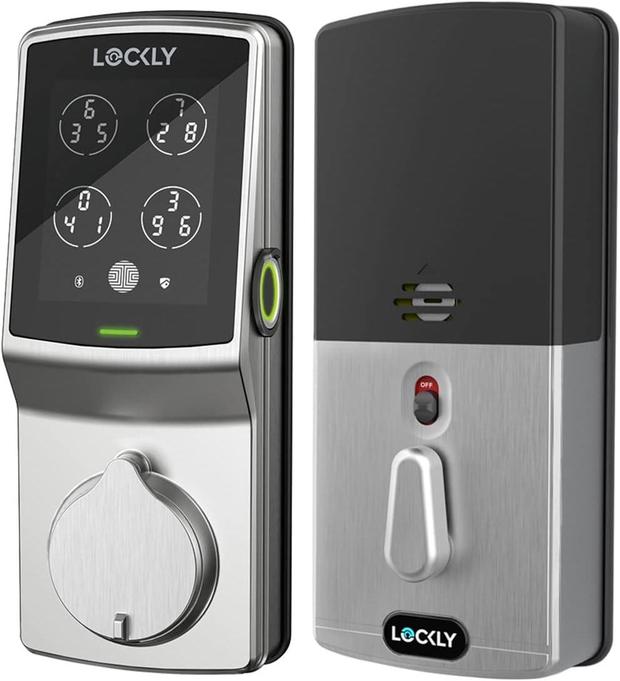
Entry methods : Smartphone, biometric, keypad, metal key | Wi-Fi support : Yes | Battery : 4x "AA" batteries | Waterproof : Water resistant | Dimensions : 7.4 x 3.2 x 4.5 inches | Color/finish options : Satin nickel, matte black, Venetian bronze, brushed gold | Auto lock feature : Yes | Compatibility : iOS, Android, Amazon Alexa
This smart lock from Lockly is controlled using an app, or use a built-in fingerprint scanner and numeric keypad. In a pinch, you can lock or unlock the door using a metal key.
Using the smartphone app, you can remotely lock or unlock the door from anywhere, plus program up to 16 key codes and check the lock's activity log. This lock is well made and durable. It's also especially easy to set up and use.
Placing a finger over the lock's biometric sensor will unlock the door in less than one second. There's even a feature that automatically re-locks the door when you leave. The Secure Plus Deadbolt can be set up to accept Alexa voice commands via a compatible smartphone, smart speaker or home hub.
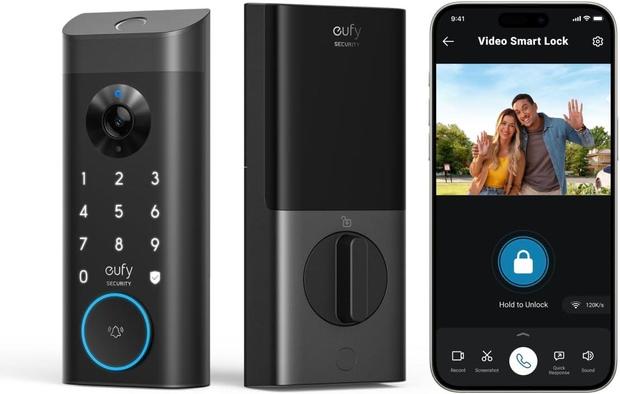
Entry methods : Smartphone, biometrics, keypad, metal key | Wi-Fi support : Yes | Battery : 10,000mAh rechargable | Waterproof : IP53 rated | Dimensions : 8.7 x 7.1 x 3.1 | Color/finish options : Grey aluminum | Auto lock feature : Yes | Compatibility : iOS, Android, Amazon Alexa, Google Assistant, Eufy Security app | Camera resolution : 2K
It's super convenient to install a video doorbell near a front entranceway; you can see who comes and goes from anywhere using a smartphone. And when someone approaches the door, you can speak with and see them using a smartphone app.
The folks at Eufy have combined the functionality of a smart lock and video doorbell into one unit that can be controlled using a single app. Operate the lock using its fingerprint scanner, numeric passcodes or a metal key. The Eufy app allows you to manage all aspects of the lock and video doorbell from virtually anywhere.
The built-in camera offers 2K HD resolution using an f/1.6 lens for clear visibility, even at night. No matter where you are, see who's at your door through the doorbell camera and manage your lock with the Eufy Security app. Stay informed with notifications and easily handle access for any visitor. This lock/video doorbell combo can be installed in between 15 and 30 minutes using just a screwdriver.
Best smart lock with a keypad : Yale Assure Lock 2 Touch
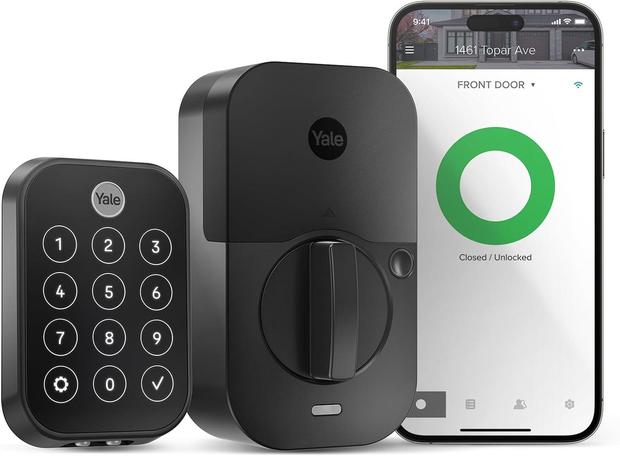
Entry methods : Smartphone, keypad, metal key | Wi-Fi support : Yes | Battery : 4x "AA" batteries | Waterproof : IP55 rated | Dimensions : 3.75 x 2.5 x 0.9 inches | Color/finish options : Satin nickel, black suede, bronze | Auto lock feature : Yes | Compatibility : iOS, Android, Amazon Alexa, Google Assistant, Apple Siri, Apple HomeKit, Samsung SmartThings, Philips Hue, Yale Access app, Apple Watch
The Yale Assure Lock is ideal for Apple users, because it supports iOS, Apple HomeKit and Siri. However, it works with Android and Amazon Alexa devices, too. The lock has a built in numeric keypad and fingerprint sensor. It comes with the required bridge and can be fully controlled and managed using your phone.
In fact, you can lock, unlock, share access and see who comes and goes from anywhere using the Yale Access app. You can even set up the lock to unlock automatically as you get home and have your phone on you. Without the phone, simply use the keypad for entry.
The lock can be set up to work in conjunction with a Blink video doorbell (sold separately). If you're an Airbnb host, this smart lock is ideal for allowing your guests entry, since it offers advanced guest management features and notifications.
How to choose a smart lock for your home
All of the smart locks featured in this roundup are designed to either replace or work with a standard deadbolt. In most cases, you'll be able to install the smart lock in 30 minutes or less, using just a screwdriver.
- Compatibility : If the smart lock is your first piece of smart tech, focus on compatibility with your smartphone and whether the lock will work with the Apple Home (for an iPhone) or Google Home (with Android devices) app. This will also impact which digital assistant the lock will accept voice commands from, such as Google Siri, Google Assistant or Amazon Alexa. If the smart lock will be used in with other smart-home gear, such as a video doorbell, smart speaker or home hub, ensure it all will work together, even if it's not all from the same brand.
- Methods of entry : The goal of a smart lock is to eliminate the need for a metal key to lock or unlock the door. Along with your compatibility with your smartphone, home hub or smart speaker, you might want a lock that has a built-in keypad for programmable passcodes; a fingerprint scanner; and a place for a traditional metal key as a backup.
- Battery life : Smart locks are powered using replaceable batteries or a rechargeable battery pack. For added convenience, you want a lock with a battery that's rated to last at least for a full year.
- Sturdiness and security : The best smart locks are not just visually appealing, easy to install and simple to operate, they're also made from quality components and offer the same, if not better, security that a traditional deadbolt. Also, pay attention to the smart lock's IP rating if it will be exposed to harsh weather.
When it comes to keeping up with the latest technologies , our team of consumer tech experts has you covered with comprehensive product roundups, in-depth product reviews and details about where and how to find the best deals. We cover everything from laptops and action cameras , to the best TVs , smart grills , tablets , smartwatches and noise canceling earbuds and headphones .
Jason R. Rich ( www.JasonRich.com ) is an internationally recognized consumer technology expert with more than 30 years' writing experience. He's also an accomplished author and photographer. One of his most recently published books, The Remote Worker's Handbook: How to Effectively Work From Anywhere ($24.99, Entrepreneur Books) is now available from Amazon and wherever books are sold.
More Essentials

The best meal kits for 2024 have organic and gluten-free options galore
Eat healthy, save money, and get your cook on with the best meal kits to try this year.

The best Bluetooth party speakers for 2024 turn up the volume and bring the bass
Soaking up the sun with outdoor parties this year? These top-rated Bluetooth party speakers have you covered.

Apple iPad Pro vs. Samsung Galaxy Tab S9 Ultra: Which tablet is better?
Our tech experts have put two of the most powerful tablets head-to-head. Discover which will best meet your needs.

The best Apple iPad deals in April 2024
Discover the best deals on the various Apple iPad models, allowing you to snag a new tablet and save some cash.

The best Apple MacBook deals in April 2024
Get a new MacBook for less with some of the best deals you'll find on Apple's powerful laptops.

When is Mother's Day 2024?
Plan ahead with the best Mother's Day gifts and flowers, plus all the information you need to celebrate mom.

What happens to my internet if I move?
Want to avoid gaps in your internet coverage when you move? Easily transfer your internet with these tips.

The best Apple Watch alternatives for 2024 may make you forget about Apple altogether
These smartwatches come with communication and fitness features that make for great Apple Watch challengers.

The best massage chairs of 2024
Check out the best at-home massage chairs of 2024 for relaxation and pain relief.

Duckworth calls for FAA to review Boeing's failure to disclose flight deck features
Sen. Duckworth is urging the FAA to look into why pilots were unaware the Boeing 737 Max's cockpit door was designed to automatically open during a rapid depressurization.

Powerball jackpot nears estimated 1-and-a-quarter billion dollars
Powerball's next jackpot will be at least an estimated $1.23 billion after no tickets matched the numbers needed to win Wednesday night's grand prize of roughly $1.09 billion.

FAA probing close call between Southwest flight, air traffic control tower
The FAA is looking into a Southwest flight that veered off course while on approach to land at New York's LaGuardia Airport and may have buzzed the air traffic control tower.

Palestinian American doctor explains why he walked out of meeting with Biden
Dr. Thaer Ahmad, an emergency physician who traveled to Gaza earlier this year, walked out of a meeting with President Biden and other Muslim and Arab leaders and activists.

What does the eclipse mean for your astrological sign?
The science of an eclipse is as real as the stars in the sky. But those stars also tell another story, and that is how astrology is impacted by this cyclical alignment of the sun, the moon and the earth.

Ticket price for women's NCAA Final Four skyrockets above $2,000
The women's NCAA Final Four games will take place in a smaller arena than the men's, causing a short supply of tickets.

Fatal poisoning from hemorrhoid cream highlights lead risks
Death in Sacramento prompts health alert about toxic metal in herbal product from Vietnam, marketed on Facebook.

Two brothers plead guilty to insider trading tied to Trump Media
The Florida brothers admitted they made over $22 million illegally before a 2021 announcement about Trump's media firm going public.

Mark Cuban defends DEI even as critics swarm
"I know DEI is a positive because I see its impact on bottom lines," the billionaire investor said on social media.

Trump Media sues Truth Social co-founders to strip them of shares
Former President Donald Trump's media business is alleging that two co-founders mismanaged the social media company.

Judge refuses to delay Trump's "hush money" trial
Trump sought to delay the upcoming trial until after the Supreme Court rules on whether he is shielded from criminal prosecution by "presidential immunity."

Arizona organizers say abortion ballot measure qualifies to be on ballot
A communications manager for Arizona for Abortion Access said they have amassed more than 500,000 signatures for the measure to enshrine the right to abortion in the state's constitution.

Man who helped lead attack on Capitol police is sentenced
Taylor James Johnatakis, who used a megaphone to orchestrate a mob's attack on police officers guarding the U.S. Capitol, has been sentenced to more than seven years in prison.

GOP dealt blow in bid to win potentially key extra Nebraska electoral vote
The Biden-Trump rematch, in at least one scenario, could come down to who wins a lone electoral vote in Nebraska. But the GOP has suffered a setback in efforts to make winning that vote more likely.
- updated 36M ago

Biden, alongside Bernie Sanders, touts inhaler price drops
Inhalers can be expensive, particularly for those without insurance.
HealthWatch

Recipient of world's first pig kidney transplant discharged from Boston hospital
The recipient of the world's first pig kidney transplant is heading home from Massachusetts General Hospital Wednesday, nearly two weeks after the surgery.

Candy mislabeled as not containing nuts recalled across the U.S.
Minnesota candy maker warns that people who are allergic to almonds could face "serious or life-threatening" reaction if they eat recalled product.

Suffering allergies? Scientists say pollen counts may be deceiving.
Researchers in London say there's a better way to help allergy sufferers predict and prevent pollen-borne punishment.

Why autism in young girls is often misdiagnosed or overlooked
On World Autism Day, which is observed April 2, a family is speaking out about their struggle to get a diagnosis. A doctor explains why this can be particularly challenging for young girls.

Oldest man in the world dies weeks before 115th birthday
Juan Vicente Pérez Mora was named the world's oldest man by Guinness World Records on Feb 4, 2022, when he was 112 years and 253 days.

British Museum faces probe over handling of sacred artifacts
For more than 150 years, the British Museum has kept 11 sacred Ethiopian tabots, or replicas of the Ark of the Covenant, quietly to itself.

Suspects fled U.K. hours after stabbing of Iranian journalist in London
London police say 3 people linked to the stabbing of an Iran International journalist managed to fly out of Heathrow just hours after the attack.
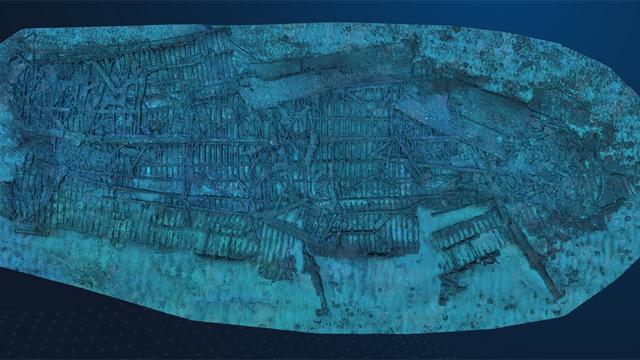
Century-old vessel found in "ship graveyard" off Australia coast
The area holds dozens of historically significant vessels that have been scuttled over the decades, including navy ships and secretive submarines.
Entertainment

LSU star Angel Reese declares for WNBA draft
"Of course, I like to do everything big," LSU star Angel Reese told Vogue. "I didn't want anything to be basic."

Bailey Zimmerman’s unconventional music path
Bailey Zimmerman will perform at the CMT Music Awards on Sunday. Zimmerman, who is nominated for an award, took a nontraditional path to breaking into the music business.

Asher Grodman on "Ghosts"
Asher Grodman, who stars in the CBS show "Ghosts," talks about the show. Grodman plays Trevor. He's just one of the ghosts who resides at the Woodstone Mansion, which has been turned into a bed and breakfast by the owners, Sam and Jay.

Lizzo says she's not leaving music industry, clarifies "I QUIT" statement
Lizzo worried fans recently with a statement saying she quit. The singer explained Tuesday what she really meant.

Beyoncé's "Cowboy Carter" breaks streaming records
The lead single, "Texas Hold 'Em," debuted at No. 1 on the Billboard Country Charts, making Beyoncé the first Black woman to top that chart.

Net neutrality: What to know before FCC vote
The Federal Communications Commission announced it will vote in April on whether or not to reinstate net neutrality -- a set of rules to ensure equal treatment of internet data. The Trump administration overturned the policy in 2017. NYU Law School professor Christopher Sprigman joins CBS News to unpack the battle.

Artists seek to end use of AI in music
More than 200 artists have signed an open letter, standing against what they call "unchecked" usage of artificial intelligence in the music industry. This follows repeated high-profile uses of AI in songs.

How AI powered robots are helping small farms
From labor shortages to environmental impacts, farmers are looking to AI to help revolutionize the agriculture industry. One California startup, Farm-ng, is tapping into the power of AI and robotics to perform a wide range of tasks, including seeding, weeding and harvesting.
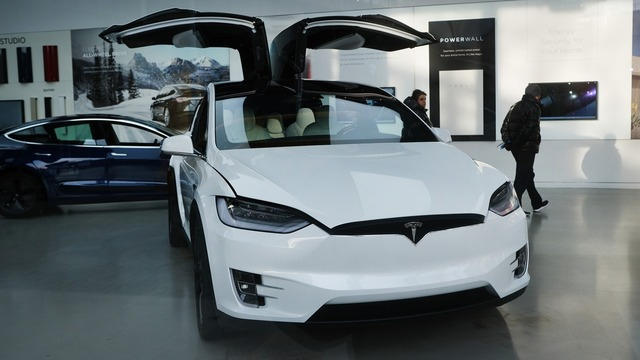
Tesla stock falls 5% as quarterly sales drop
Tesla has reclaimed the title of largest electric vehicle seller in the world, so why did its stock fall 5% on Tuesday? Rebecca Elliott, reporter for The Wall Street Journal, joins CBS News to discuss.
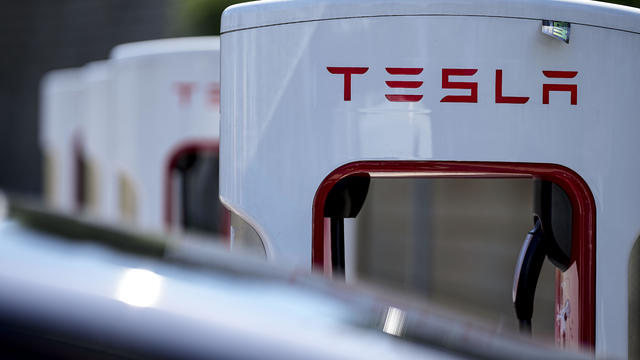
Tesla sales drop as competition in electric vehicle market heats up
Tesla accounted for 80% of electric vehicle sales in the U.S. in 2020, but that figure fell to 55% last year.

"Cicada-geddon" insect invasion will be biggest in centuries
Trillions of red-eyed periodical cicadas are about to emerge in numbers not seen in many years. Here's where to expect them.

CBS News special report on 1970 eclipse
On March 7, 1970, millions across North America were able to catch a glimpse of a total solar eclipse. Charles Kuralt anchored CBS News' special report "Earth in the Shadow of the Moon."

Solar eclipse to bring economic boost
A total solar eclipse will cross a large section of the U.S. on April 8, and up to 4 million people are expected to travel to be in the “path of totality” for the rare event. It will pump an estimated $1 billion into local economies.

Best places to see the April 8 solar eclipse in the totality path
The total solar eclipse will be visible along a 2,500-mile path. Meteorologists are closely monitoring the latest models, but historical data suggests those hoping to view the corona and see a fully darkened midday sky may find themselves dodging clouds due to April weather patterns.
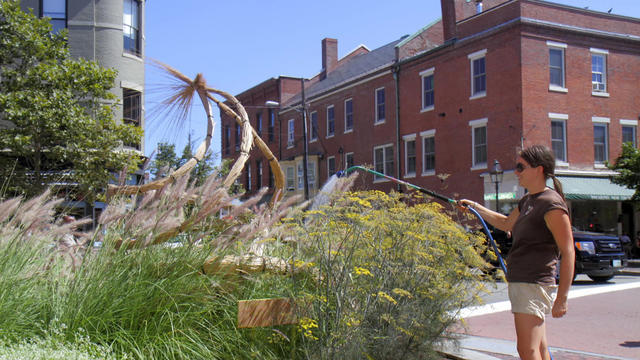
Building healthier habitats to resist the impacts of climate change
Scientists have prescribed practical steps to heal our warming planet, including returning our towns back to a more natural state. CBS News correspondent Jonathan Vigliotti explains how taking steps to mitigate the effects of climate change can save us from the trauma of disasters brought about by extreme weather.

Wife convicted in man's 2002 murder: "Like a made-for-TV movie"
Burned remains were found in a metal locker near a blueberry field in 2002, but the remains were not identified until 2015.

Woman held captive for months escapes at a Walgreens, police say
A woman who said she had been held captive by man for months was able to escape during a stop at a Walgreens in Tampa, police said.

Mayoral hopeful killed just as she began campaigning in Mexico
In video of the scene posted on social media, several shots can be heard and people are seen running and falling down.

Student, 12, shoots 3 other 12-year-olds at Finnish school, kills 1, police say
A 12-year-old student opened fire at a lower secondary school in southern Finland Tuesday, killing one fellow student and wounding two others, all also 12-years-old, police said.

SUV rams into front gates at FBI Atlanta headquarters, suspect in custody
Suspect Ervin Lee Bolling is in custody after an SUV rammed the front gate of the FBI Atlanta field office.

3 companies win NASA contracts to develop Artemis moon rover designs
After a year to perfect their designs, the companies will compete for a single contract to begin actual development of an unpressurized moon rover.

Tool aims to make eclipse more accessible
Millions will experience next week's total solar eclipse using their eyes, and hopefully a pair of filtering glasses. But what about people who are blind or visually impaired? CBS News national environmental correspondent David Schechter reports on how an astronomer is aiming to create an accessible eclipse experience.

Local businesses try to cash in on eclipse
People along the path of totality are gearing up for Monday's total solar eclipse, and local businesses are hoping to cash in on the opportunity. Janet Shamlian takes a look at how business owners are looking to take advantage of the celestial event.

Arizona names Pluto as its official state planet
"We in Arizona haven't forgotten about you, Pluto," the state representative who introduced the bill said.
Latest Galleries

Notable Deaths in 2024
A look back at the esteemed personalities who've left us this year, who'd touched us with their innovation, creativity and humanity.

PHOTOS: Baltimore bridge collapses after cargo ship rams into overpass
The Francis Scott Key Bridge in Baltimore collapsed early Tuesday, March 26 after a column was struck by a container ship that reportedly lost power, sending vehicles and people into the Patapsco River.

Could an Alabama woman have shot herself twice?
When Tiffiney Crawford was found dead inside her van, authorities believed she might have taken her own life. But could she shoot herself twice in the head with her non-dominant hand?

CBS newsman Charles Osgood (1933-2024)
We look back at the life and career of the longtime host of "Sunday Morning," and "one of the most enduring and most endearing" people in broadcasting.

Texas couple investigates teen daughter's unusual death
Cayley Mandadi's mother and stepfather go to extreme lengths to prove her death was no accident.
Latest CBS News Videos

Missy Testerman named 2024 Teacher of the Year
Missy Testerman, a longtime elementary school teacher at Rogersville City Schools in Rogersville, Tennessee, has been named the 2024 Teacher of the Year.

What's next for Disney after board fight?
Disney stockholders gave the company's current leadership a win on Wednesday, reelecting all 12 board members and rejecting two hedge funds that fought for seats. Brooks Barnes, senior staff writer for The New York Times, joins CBS News to discuss what the results mean for the company's future.

Tornado severely damages small Tennessee town
A storm system is moving east after sweeping across the middle of the U.S., pushing strong winds, heavy rain and tornadoes in some areas. CBS News national correspondent Dave Malkoff reports from Sunbright, Tennessee.
- Search Please fill out this field.
- Manage Your Subscription
- Give a Gift Subscription
- Newsletters
- Sweepstakes
HGTV's 2024 Smart Home Is Here! Find Out Where It's Located and Get an Exclusive First Look Inside
PEOPLE has a sneak peek of all the house's amazing features, plus how to enter to win it
Natalia Senanayake is an Editorial Assistant, Lifestyle at PEOPLE. She covers all things travel and home, from celebrities' luxury mansions to breaking travel news.
:max_bytes(150000):strip_icc():format(webp)/IMG-5319-2-05e43cc4a0464d5f9e4645ab15d5138b.jpg)
HGTV Smart Home 2024 is a serene, contemporary escape.
PEOPLE can exclusively reveal the ultra modern, yet cozy abode is located in Atlanta, Georgia, and designed by HGTV’s Tiffany Brooks for the tenth year in a row.
The host is sharing a first look at the two-bedroom, two-and-a-half bathroom retreat that one lucky fan will get the keys to in the video tour, above. Along with the 2,035-square-foot pad, the winner of the prize will receive an all-electric Mercedes-Benz EQE SUV as well as $150,000. The entire prize amounts to over $1 million.
“This year’s home is a sophisticated retreat where neutral, relaxed and airy spaces meet modern, high tech, sleek features,” Brooks says. “The smart living solutions and cozy feel will provide the winner the perfect balance.”
Stepping inside the home, Brooks reveals that the previous design of the house had closed-off, separated rooms before they opened up the floor plan on the first level.
The HGTV designer shows off the “airy” living room, which features a wall-spanning fireplace, skylights, and a library with a TV that can also function “as a piece of art.” The space also includes folding glass doors for easy indoor/outdoor living.
The living room opens up into the dining and kitchen area, where built-in banquette seating can accommodate eight people, and extra storage can be found underneath.
Behind the banquette lies the modern kitchen, which Brooks refers to as “the most head-turning renovation that we have in the house.” The designer reveals they intentionally avoided upper cabinets so there would be room for the double windows overlooking the lush backyard.
A tucked-away pantry includes amenities like a microwave, ice maker, extra storage and a beverage refrigerator.
In the primary bedroom, Brooks made sure to add a number of “smart features” for the future homeowners to enjoy. Some of these include remote-controlled shades, LED lights wrapped around the ceiling and a headboard equipped with a reading light and bluetooth connectivity.
The serene primary bathroom has double sinks and a wet room with dual shower heads, body sprays, adjustable handhelds and a soaking tub.
Upstairs, the media room also boasts a “fully-equipped” snack bar, according to Brooks.
Down the hall past the laundry room and guest bathroom lies a blush-tone guest bedroom. A second guest room has a “hand-painted mural on the ceiling, that’s a nod to Atlanta being known as the city in the forest,” Brooks says.
Never miss a story — sign up for PEOPLE's free daily newsletter to stay up-to-date on the best of what PEOPLE has to offer, from juicy celebrity news to compelling human interest stories.
The front exterior of the home plays into the nature theme with what Brooks calls a “massive living plant wall that’s low maintenance.”
In the backyard, the deck features plenty of seating around double fire pits for cozy nights. The home also has its own outdoor kitchen, dining area and pergola that leads directly into the primary bedroom.
Fans can enter to win the HGTV Smart Home 2024 twice per day starting April 19 at 9 a.m. on HGTV.com/Smart and FoodNetwork.com/HGTVSmart.
Related Articles
Smart Houses
The world of computer technology is continuously advancing each and every day. We look back at what we had 5 years ago and are amazed to see how far we have come in such a short time. To know what to expect in the upcoming years is impossible, for technology is at such a constant increase. Computer technology is a wonderful tool and can benefit many people if you are willing to accept it. One of the advancements on the rise is Smart Houses. A Smart House is a house that is controlled by computers with artificial intelligence.
Many people are choosing to turn their houses into smart ones in order to create a safer and more technological environment. Throughout my report, I will discuss some features that I would include in my own smart house, such as safety and convenience. I think the most common reason that my house will be a smart house is for safety purposes. Not only does it give a peace of mind to know that my house is protected at all times, but it gives protection in times of danger.
Brinks Home Security provides several packages which you can accustom to your price range and allows you to pick the package which is right for your home. The standardized system is controlled by a digital keypad, which allows you to type in a 3-digit number that enables the system. It also features three panic buttons that directly contact the police department, the fire department, and the hospital in one quick touch of a button. This package comes with 2 door and window sensors that set the alarm off if they are opened while the system is armed.
It also comes with a motion detector that detects heat and body movements. If any of these features are triggered, a siren will sound which makes your family and the intruder aware that the Brinks monitoring center are being notified. Some extra features are a glass break protector, smoke & heat detectors, and carbon monoxide detectors. The system also provides a keyless keyfob that allows you to enable or disable the system with a touch of a quick button. As you can see, the Brinks Home Security provides a thorough package of home safety features.
Not only is it reliable, but also gives a secure way to keep your house safely protected. Other systems, such as the FireCracker Kit from X10. com , provide you with an affordable and easy system. It allows you to control all the systems in your house based from your computer. You can make your coffeepot start brewing or your turning off your lamp simply by the click of a mouse. Control all the lights in your house with your PC or with a remote. One touch of a button and your lights will be on, your heater turned up, and your bath tub already starting to get filled. How much better can it get?
I would also have a Robo-dog in my Smart House. This is a robotic dog, which features a motion sensor that puts the dog into a barking frenzy when it is set off. This not only scares the intruder, but it also notifies me that there is something wrong. The Robo-dog provides the benefits of a good guard dog without the inconvenience of attending to a pet. It would be placed near the door so if an intruder breaks in, then my guard dog will stop him in his tracks. There are many simple and affordable ways to keep your house, and mine, secure. Another common reason for a Smart House is convenience.
Imagine being able to control the temperature of your house or turning on your lights with one simple phone call. X10 provides just that . The touch-tone controller activates lights, reboots PCs and sets air for heating or air conditioning with a quick touch of a button. I can access this via any touch-tone phone or from the manual control keypad placed in my house. This gives the convenience of coming home to a warm, well-light house without having to go through the hassle of putting wood in the wood-stove or waiting for the heater to heat up the house.
A number of software programs are available that are needed to run a smart house. One of the programs suggested by the Home Automation Forum is the HomeSeer . This is a software program that allows you to run all of your computer-automated systemssuch as the touch-tone keypad. It has speech recognition and synthesis that allows you to control your programs simply by the sound of your voice. You simply need to program words into the system, such as bathroom light on and as soon as it recognizes your words, it turns the bathroom light on.
It also allows variations, so if you said bathroom on it would also perform the same task. It also has an email alert program. If something is irregular in your house, it will notify you via email as soon as it notices the problem. This will give you the security in knowing your house is protected and watched at all times. The inventor of HomeSeer, Rich Helmke, is currently working on a new program that is a tapi phone interface. This will give you all the control you want, as described by the Home Automation Forum.
A variety of free downloads of HomeSeer for trial offers are available at http://keware. com/download. htm#hscm11. As you can see, the possibilities for a Smart Houses are endless. Home automation is on a rise and soon we will no longer have to worry about those tedious tasks that are so time consuming in our daily lives. Cooking & cleaning wont even be a concern anymore, for your smart house will provide you with the living environment you desire. Consider making your house a smart house and provide your family with the security and convenience that they deserve.
To export a reference to this essay please select a referencing style below:
Related essays:
- The Y2K Problem
- Are Good Computer Viruses Still a Bad Idea
- Victims And Crime Evaluation Paper
- Computer Crime: Prevention and Innovation
- Computer Engineering
- Electronic crime Essay Examples
- A Literary Analysis Of My Kids Dog Essay
- Lighting Advancments
- History Of The Computer
- Computer Viruses Essay
- The Northern Lights
2024 White House Easter Egg Roll in photos

New Research
Microplastics Are Contaminating Ancient Archaeological Sites
New research suggests plastic particles may pose a threat to the preservation of historic remains
Aaron Boorstein
Staff Contributor
:focal(1000x752:1001x753)/https://tf-cmsv2-smithsonianmag-media.s3.amazonaws.com/filer_public/b4/1d/b41d5c1e-7ee9-4fc2-b162-e2b92f4769e9/microplastics.jpg)
Today, microplastics are found almost everywhere: oceans , food , the atmosphere and even human lungs , blood and placenta s. But while they’re thought of as a modern problem, plastic particles are now appearing where one might least expect: ancient archaeological sites.
Researchers found microplastics in soil deposits 7.35 meters (24.11 feet) below the ground, according to a study published this month in the journal Science of the Total Environment . The soil samples date to the first or early second century C.E. and were sourced from two archaeological sites in York, England. Some were excavated in the late 1980s, while others were contemporary samples.
The scientists then used an imaging technique called μFTIR , which can detect microplastics’ quantities, size and composition. Across all samples, they found 66 particles consisting of 16 polymer types.
“This feels like an important moment, confirming what we should have expected: that what were previously thought to be pristine archaeological deposits, ripe for investigation, are in fact contaminated with plastics,” says John Schofield , an archaeologist at the University of York, in a statement .
Microplastics are fragments of plastic that are smaller than five millimeters long, the diameter of a standard pencil eraser . They come from a variety of sources, including laundry, landfills, beauty products and sewage sludge.
“In the last not even 100 years—mostly since the 1950s—we as humans have produced eight billion tons of plastic, and the estimate is only about 10 percent of that has been recycled,” Leigh Shemitz, president of the climate education group SoundWaters, told Yale Sustainability in 2020.
Microplastics have been found in soil samples before. In fact, almost one-third of all plastic waste ends up in soil or freshwater, according to the United Nations Convention to Combat Desertification .
But the new study provides “the first evidence of [microplastic] contamination in archaeological sediment (or soil) samples,” write the researchers. These findings could change how archaeologists protect historic sites.
“While preserving archaeological remains in situ has been the favored approach in recent years, the new findings could trigger a change in approach, as microplastic contamination could compromise the remains’ scientific value,” writes CNN ’s Jack Guy.
In situ , Latin for “in the place,” is the term used to describe archaeological objects that have not been moved from their original locations. Leaving remains in situ helps prevent site and artifact damage, preserves contextual setting and allows future researchers to gather information.
“The presence of microplastics can and will change the chemistry of the soil, potentially introducing elements which will cause the organic remains to decay,” says David Jennings , chief executive of York Archaeology, in the statement. “If that is the case, preserving archaeology in situ may no longer be appropriate.”
Now, the researchers will shift their attention toward better understanding the implications of their findings. They know microplastics could threaten the integrity of archaeological samples, but what exactly does that harm look like?
“To what extent this contamination compromises the evidential value of these deposits and their national importance is what we'll try to find out next,” says Schofield.
Get the latest stories in your inbox every weekday.
Aaron Boorstein | READ MORE
Aaron Boorstein is an intern with Smithsonian magazine.
- Skip to main content
- Keyboard shortcuts for audio player
House will send impeachment articles against Mayorkas to Senate on April 10
Lexie Schapitl

Homeland Security Secretary Alejandro Mayorkas speaks during the U.S. Conference of Mayors' Winter Meeting in Washington, Thursday, Jan. 18, 2024.(AP Photo/Jose Luis Magana) Jose Luis Magana/AP hide caption
Homeland Security Secretary Alejandro Mayorkas speaks during the U.S. Conference of Mayors' Winter Meeting in Washington, Thursday, Jan. 18, 2024.(AP Photo/Jose Luis Magana)
House Republicans will deliver two articles of impeachment against Homeland Security Sec. Alejandro Mayorkas to the Senate on April 10, Speaker Mike Johnson announced Thursday.
Johnson and the Republican House members assigned to prosecute the impeachment shared the update in a letter to Senate Majority Leader Chuck Schumer. They urged Schumer to "schedule a trial on the matter expeditiously."
Schumer and his staff have promised to start the process of swearing senators in as jurors the day after the articles are received in the chamber. Washington Senator Patty Murray, the Senate President Pro Tempore, will preside over the trial.
The House passed the two articles of impeachment by one vote in February — with only Republican support — making Mayorkas the first cabinet member to be impeached since William Belknap, secretary of war under President Ulysses S. Grant, in 1876. Three Republicans voted with all Democrats against the impeachment.

Homeland Security Secretary Alejandro Mayorkas impeached by House Republicans
But the proceedings stalled as lawmakers negotiated must-pass spending bills and worked to avert a government shutdown. Lawmakers chose to pause the impeachment process because Senate rules require all other business to be suspended while impeachment is prosecuted on the Senate floor.
The articles accuse Mayorkas of "willful and systemic refusal to comply with the law" in enforcing border policy and "breach public trust." After their passage, Schumer called the impeachment effort against Mayorkas a "sham," and said in statement that Republicans have failed to demonstrate that the secretary has committed any impeachable offenses.
The Democratically-controlled Senate is widely expected to acquit or otherwise sidestep the charges and allow Mayorkas to remain in his role. Some Republicans in the upper chamber have also expressed doubts that Mayorkas' actions rise to the "high crimes and misdemeanors" standard set by the Constitution for impeachments.
NPR's Eric McDaniel contributed to this report.

IMAGES
COMMENTS
Smart house energy management system helps in saving energy cost by up to 65% compared to a house where energy usage is controlled manually. Security system. A smart house is far much secure as it is easy to protect making it hard to break in than the current house. Alarm systems, similar in application to car alarm are installed in a smart house.
Smart homes affect the grid-power quality in three different areas, as will be discussed in the following paragraphs . 4.1 Generating equipment. Integrated micro generation schemes in smart homes are mainly single-phase sources based on inverters with high switching frequencies that reach to many kHz. Low-order harmonics of such a generation ...
The smart home is a crucial aspect of modern living and employs secure applications and equipment. It is a component of IoT cloud computing systems [1].These technological advancements have ...
Smart Home: A convenient home setup where appliances and devices can be automatically controlled remotely from anywhere in the world using a mobile or other networked device. A smart home has its ...
The smart home service is a key part of the smart grid consumption. It is a real-time interactive response between the power grid and users, and enhances the comprehensive service capability of the power grid, also realizes the intelligent and interactive use of electricity, further improves the operation mode of the power grid and the users' Use patterns to improve end-user energy efficiency.
The Smart House Project Information Technology Essay. The Smart House Project was initiated in the early 1980s as a project of the National Research Center of the National Association of Home Builders with the cooperation of a collection of major industrial partners [1]. Within the last 50 years, most urban areas experienced a dramatic increase ...
The idea of a smart home. A special issue dedicated to 'bringing users into building energy performance' may not seem like the ideal place for commenting on smart technology. But information and communication technology (ICT) and energy systems are altering the meaning of 'user' and changing the performance of homes, and not necessarily ...
With lower costs and easier assembly, today, developing a new project without home automation seems somewhat absurd. Below, with the help of AVE Chile, we've compiled a series of tips to help you ...
The X10 home automation standard for using power lines to connect appliances was established in 1975 , and although that technology never caught on, by 1999, smart houses had become such an accepted expectation of the future that Disney offered up a family comedy movie, Smart House. Smart houses were finally realized in a commercially viable ...
A smart home is any home that uses some form of electronic device to control or automate everyday tasks. These homes often consolidate around a central hub that allows communication between all of the devices located in the house. These devices can range from temperature sensors, smart thermostats, wall switches, smart plugs, water sensors ...
Furthermore, a 2020 report by the International Institute for Environment and Development estimates that by 2050, roughly 68% of the population will live in urban centers. That works out to 6.6 ...
A Smart House is a house that is controlled by computers with artificial intelligence. Many people are choosing to turn their houses into smart ones in order to create a safer and more technological environment. Throughout my report, I will discuss some features that I would include in my own smart house, such as safety and convenience.
The assisted-living project is part of the University's wider InterHome project, which is the development of a smart house. The house stores the usage patterns of the person living there and can adapt to make it as energy efficient as possible. 'Linking the two together, and building the service element, allows us to introduce the assisted ...
2.1 Literature Review Method. By adopting the method employed by Strengers and Nicholls (), Wilson et al. (), and Solaimani et al. (), the smart house concept was investigated through an international content analysis.The content included magazine articles, online articles, and scientific papers written about common similarities and differences between smart house practices and research.
Implementation of IoT in Smart Homes. Omkar Bhat, Sagar Bhat, Pradyu mna Gokhale. IT Dept., Smt. Kashibai Navale College of Engineering, Ambegaon1-3. Ab stract: The Internet of Things (IoT) is the ...
819 Words4 Pages. = The future of Smart Home Technology A smart home is where two physical devices interconnected to each other by remote controllers. A smart home technology called as Home automation, which provides security, comfort and energy efficiency by allowing a smartphone. The smart home hub is a device which acts as central part of ...
Do you dream of turning your house into a digital home where all the systems will work in unison and can be controlled remotely using your smartphone! If you have an affirmative response, then you have come to the right place. How Smart Homes Have Changed Design. Today we are going to discuss how the trend of smart homes has been imparting a facelift to the architecture industry:
In a SMART HOUSE, people build a relationship between computer and home. The SMART HOUSE is a home management system that allows home owners to easily manage their daily lives by providing for a lifestyle that brings together security, energy management, entertainment, communications, and lighting features. So, the SMART HOUSE system is ...
Satisfactory Essays. 1403 Words. 6 Pages. Open Document. The use of the Smart Home". The technology use of the smart home is very helpful in today's world for many reasons.Normally when you step inside your home, the refrigerator is the first thing you go for. The refrigeration is important in both maintaining the safety and quality of many ...
House Smart Furniture Company. House Smart Furniture Company has been founded in Sydney in 1986 by a very experienced businessmen, Colin Moreland. It' main business was to design and manufacture self-assembled, compact low cost furniture and it was leading the industry for a long time.…. 3165 Words. 15 Pages.
Home owners can control their SMART HOUSE System using a menu driven control panel, touch-tone phone, personal computer, remote control or programmable wall switch. All SMART HOUSE controls are designed to be simple and easy to use. Because smart houses are independence, they can help people with disabilities maintain an active life.
Essay content: The SMART HOUSE is a home management system that allows home owners to easily manage their daily lives by providing for a lifestyle that brings together security, energy management, entertainment, communications, and lighting features. So, the SMART HOUSE system is designed to be installed in a new house...
Essay Smart House - Gain recognition with the help of my essay writer. Generally, our writers, who will write my essay for me, have the responsibility to show their determination in writing the essay for you, but there is more they can do. They can ease your admission process for higher education and write various personal statements, cover ...
Best smart lock for easy installation: August Wi-Fi Smart Lock Best smart lock with easy share e-keys : Lockly Secure Plus Deadbolt Best smart lock and video doorbell combo : Eufy Security E330
HGTV's 2024 Smart Home Is Here! Find Out Where It's Located and Get an Exclusive First Look Inside. PEOPLE has a sneak peek of all the house's amazing features, plus how to enter to win it
A Smart House is a house that is controlled by computers with artificial intelligence. Many people are choosing to turn their houses into smart ones in order to create a safer and more technological environment. Throughout my report, I will discuss some features that I would include in my own smart house, such as safety and convenience.
Children take part in the annual White House Easter Egg Roll on on April 1, 2024 in Washington, DC. In addition to the traditional egg roll and egg hunt, First Lady Jill Biden continues last year ...
New research suggests plastic particles may pose a threat to the preservation of historic remains Aaron Boorstein Staff Contributor Today, microplastics are found almost everywhere: oceans, food ...
House will send Mayorkas impeachment articles to the Senate on Apr. 10 The House passed the two articles along party lines in February, but proceedings stalled amid government funding negotiations.